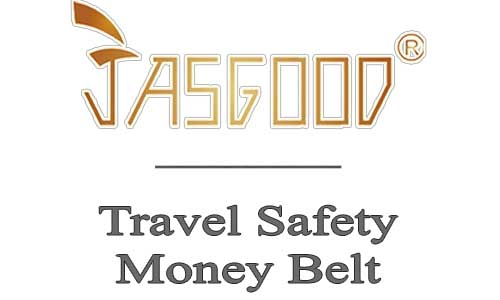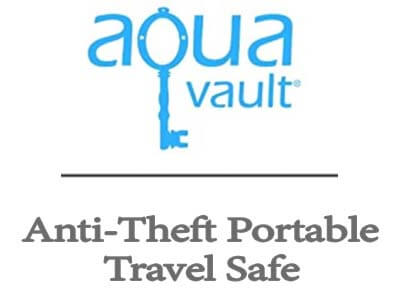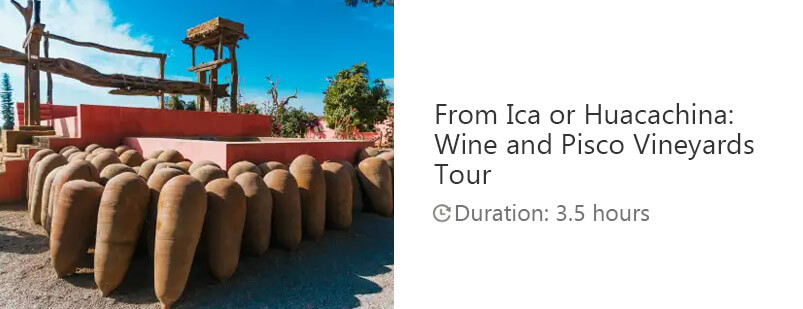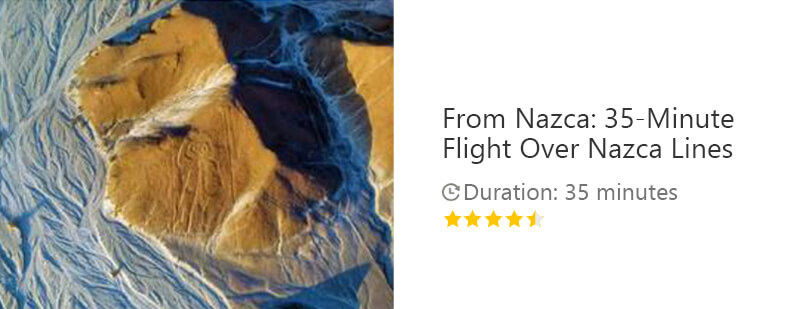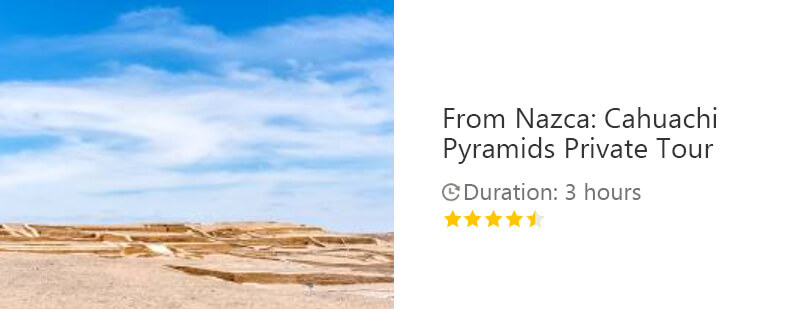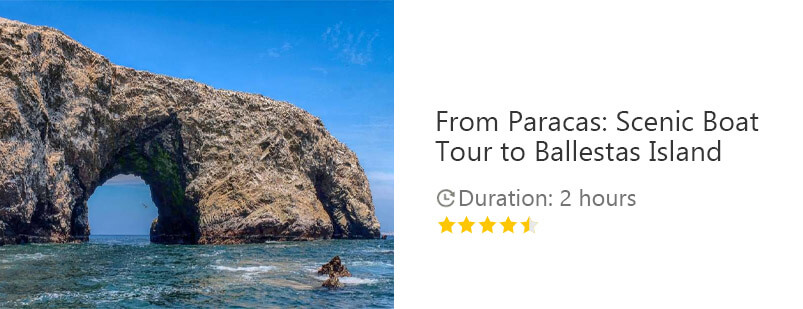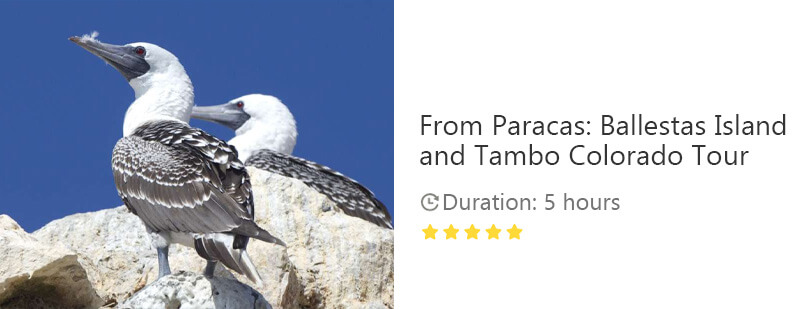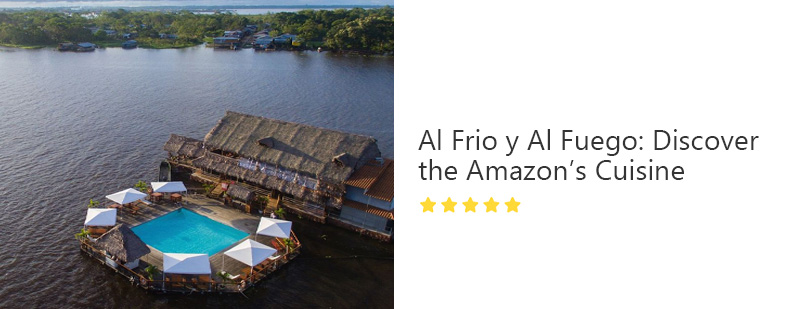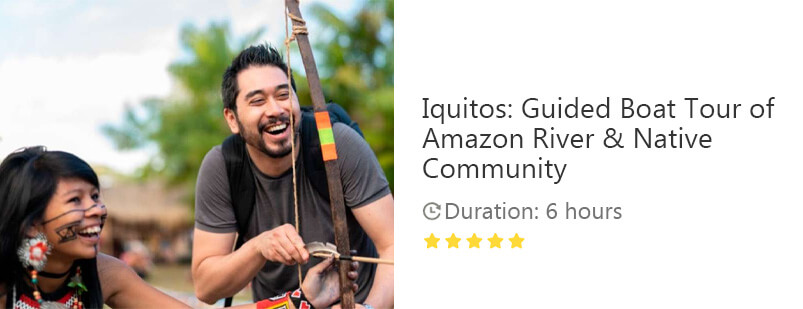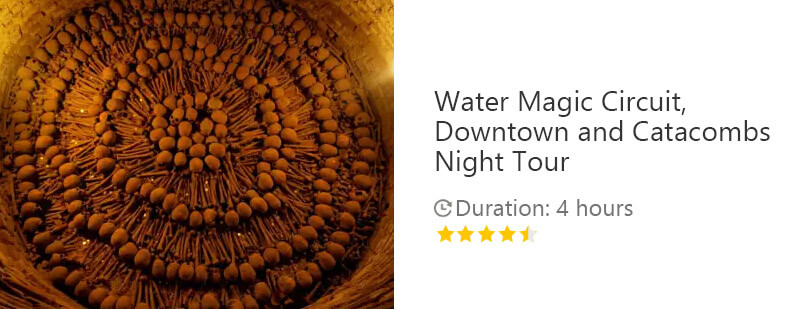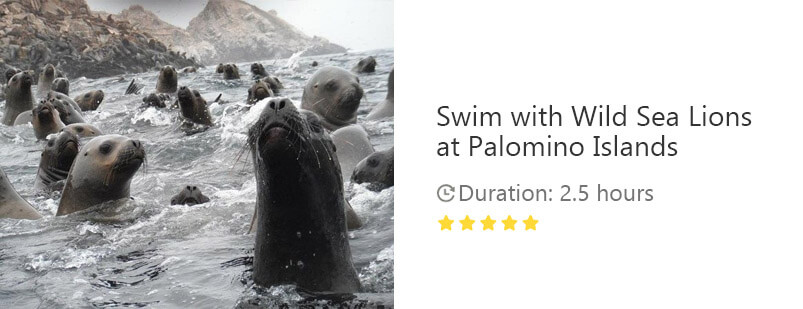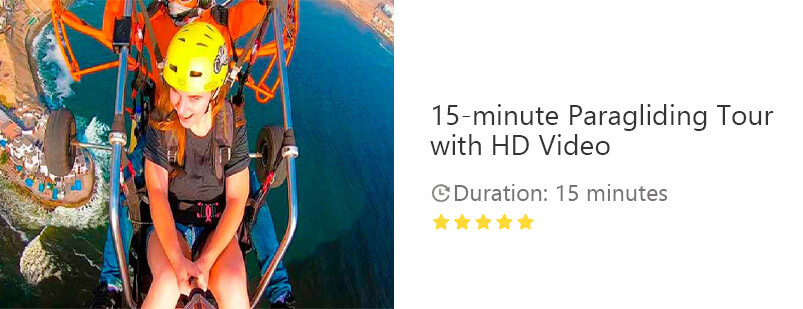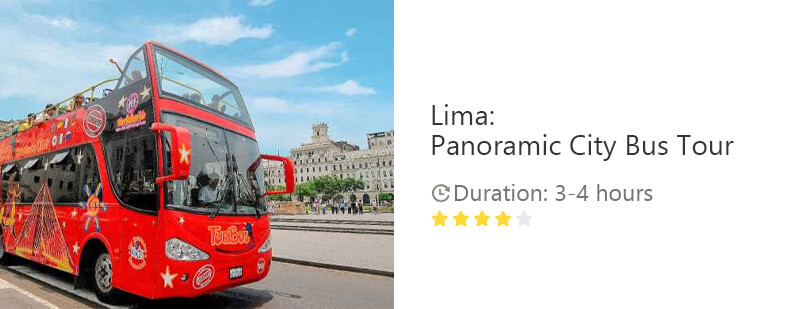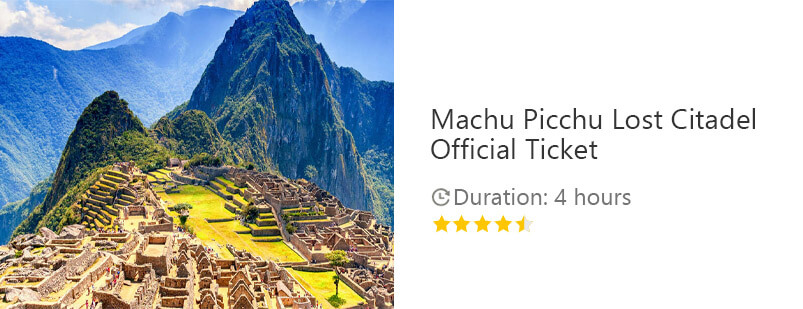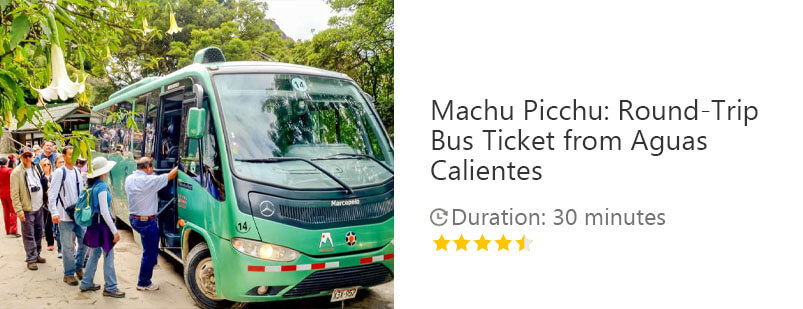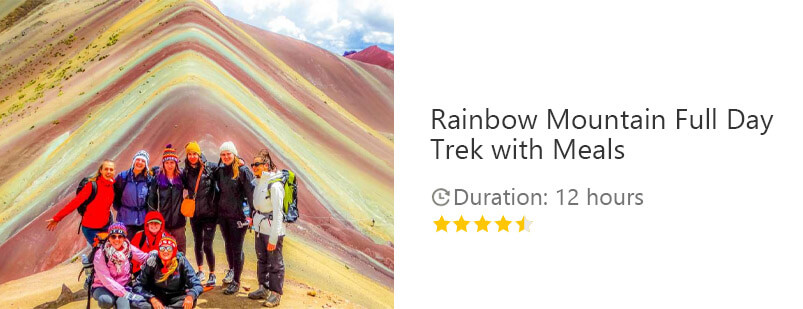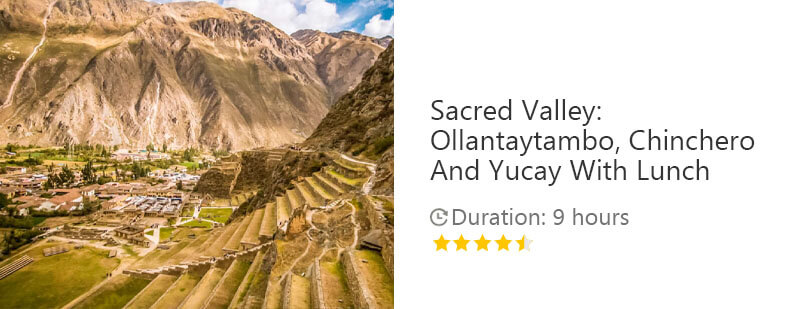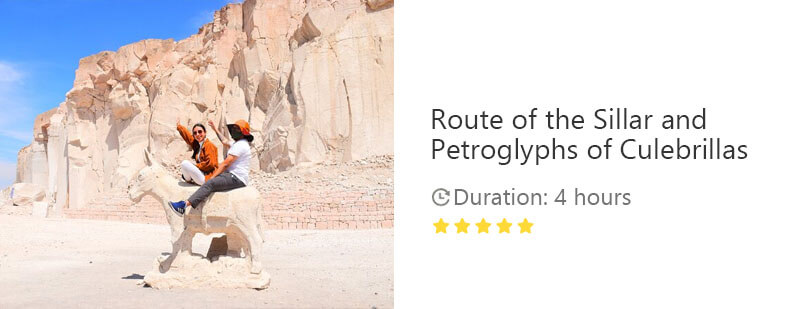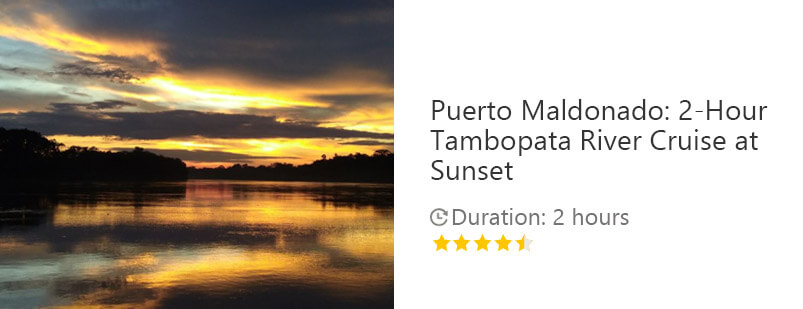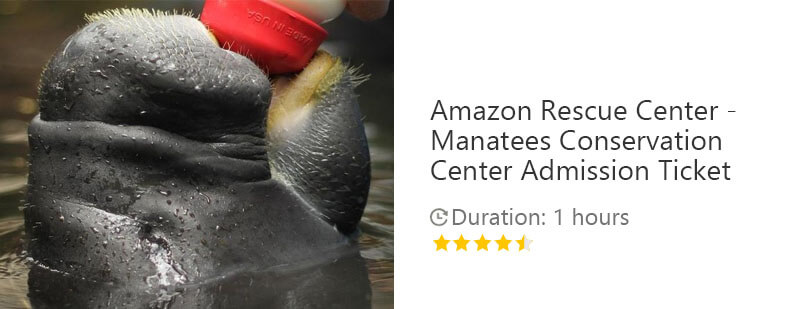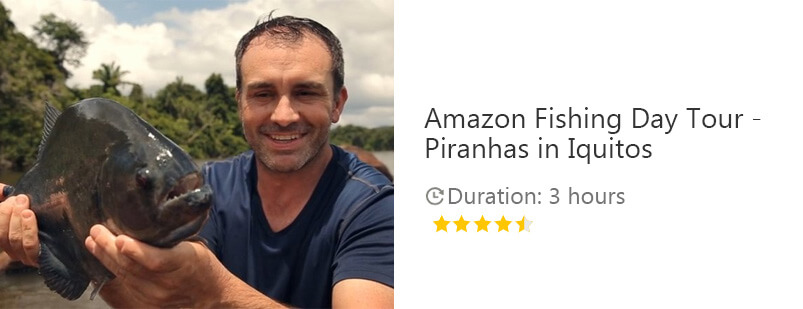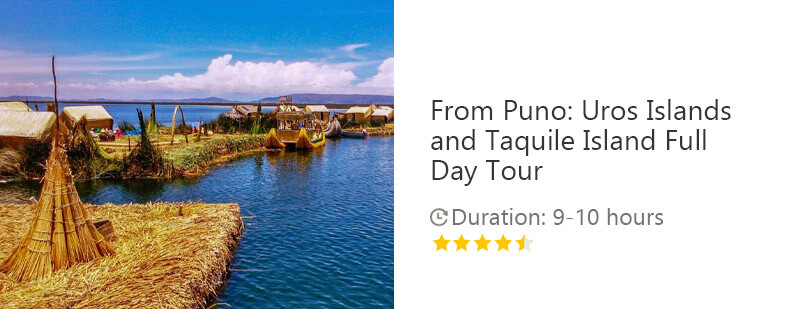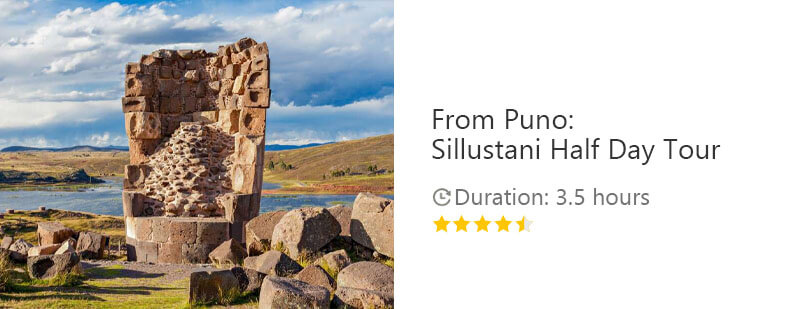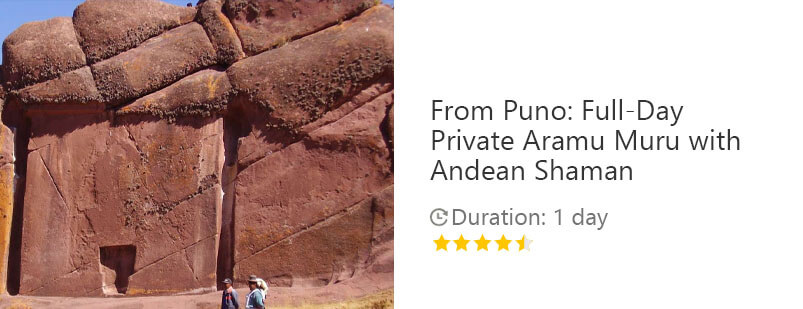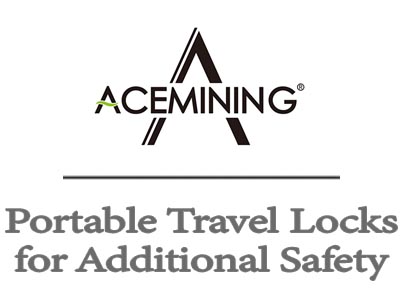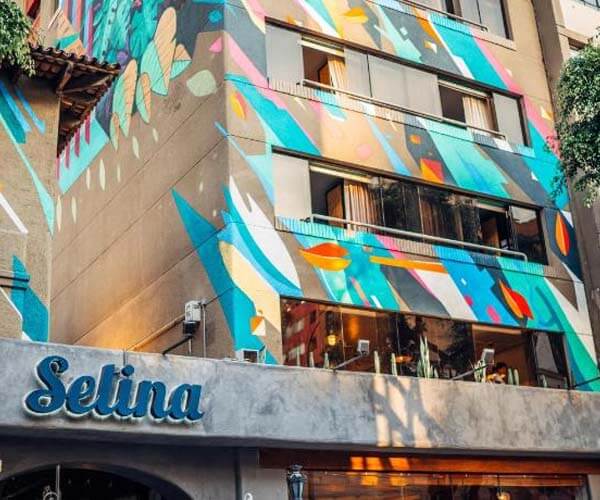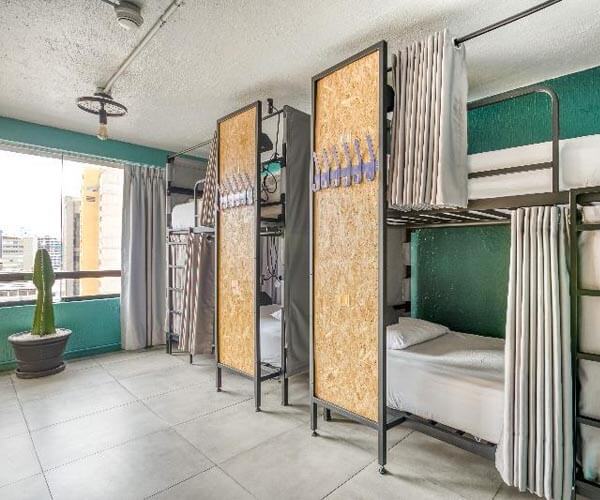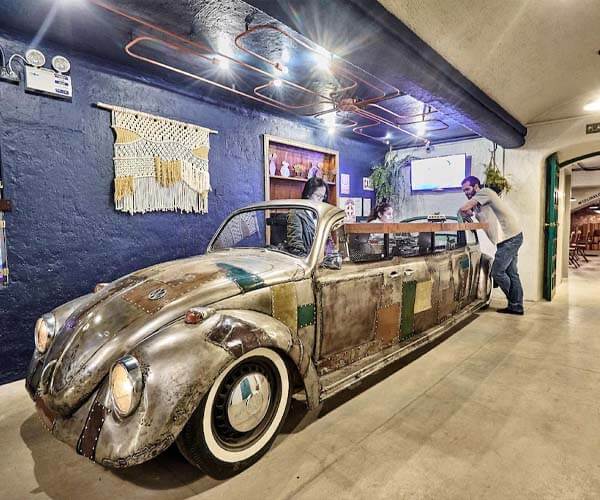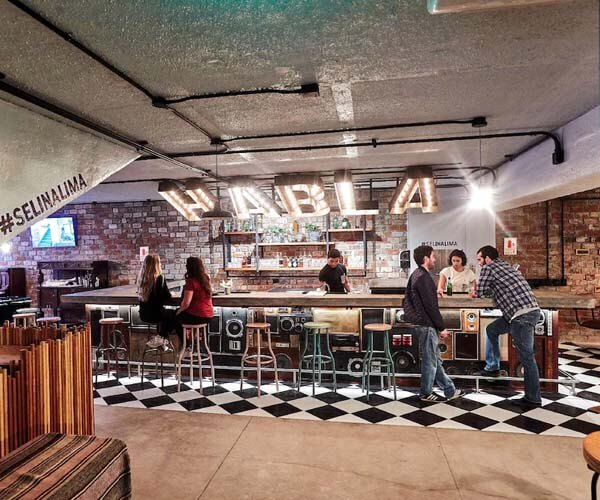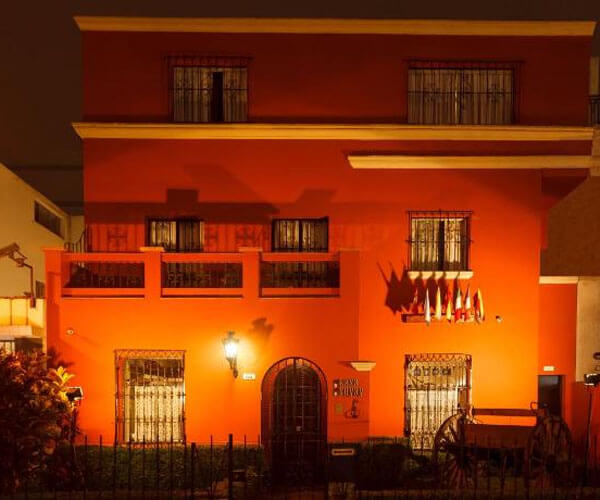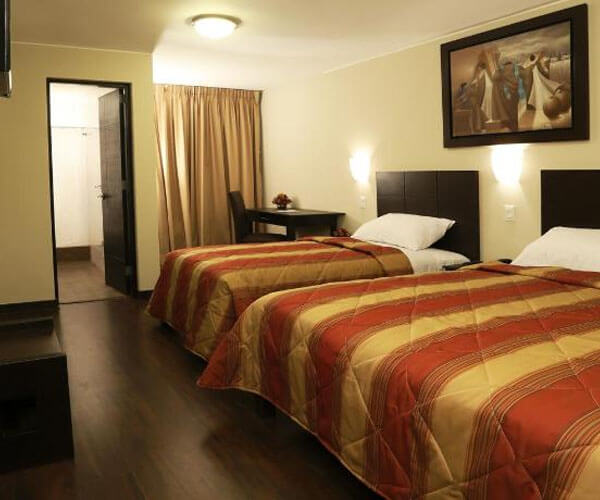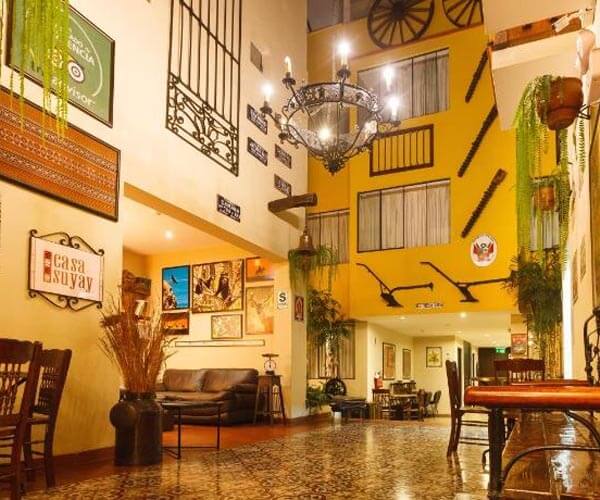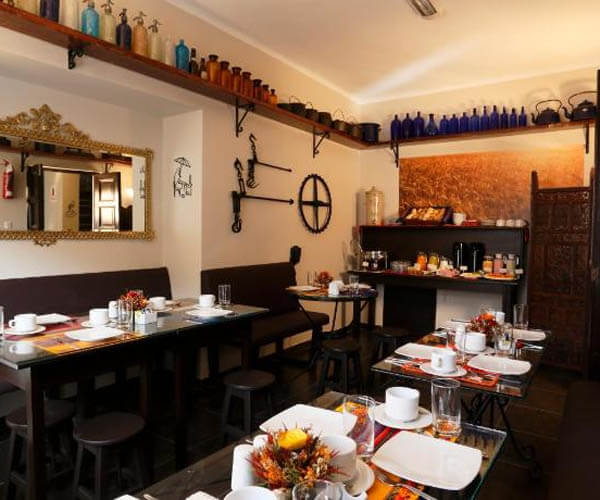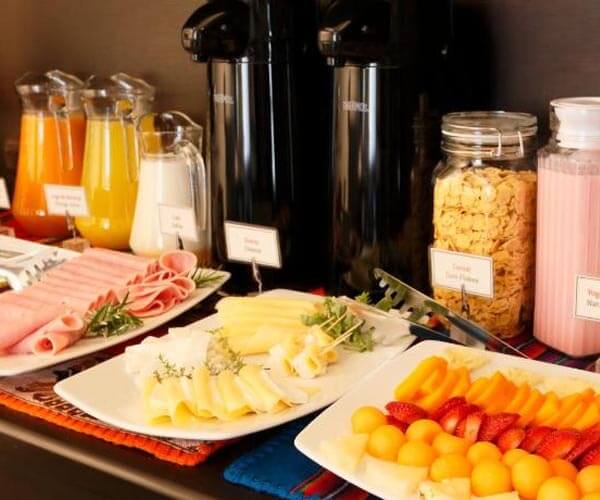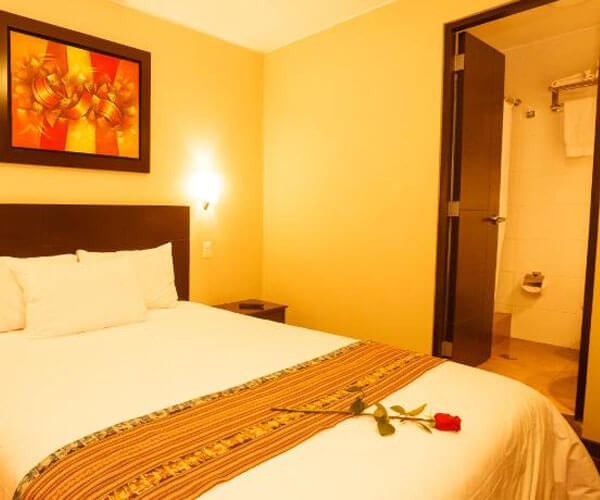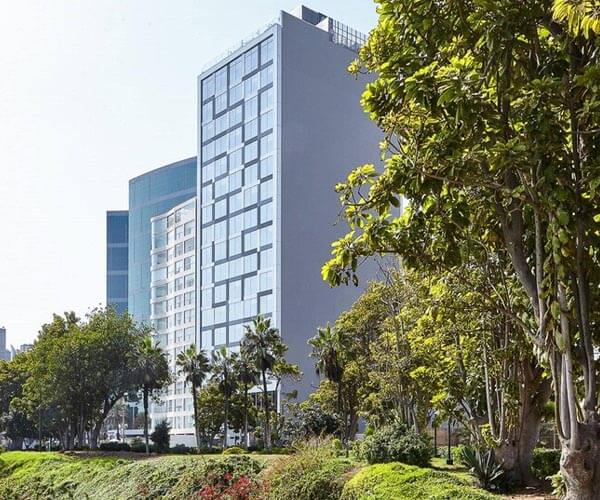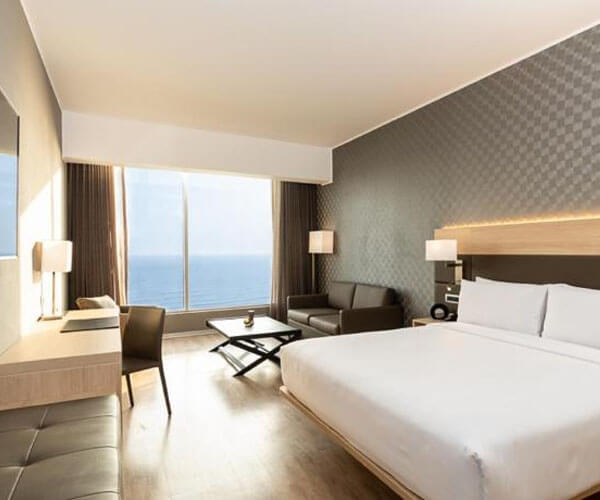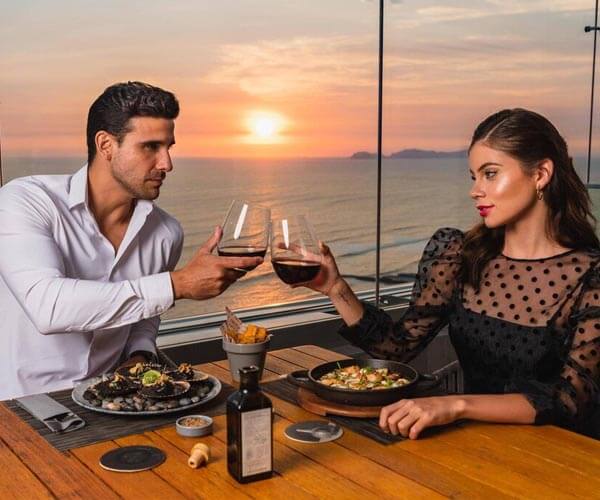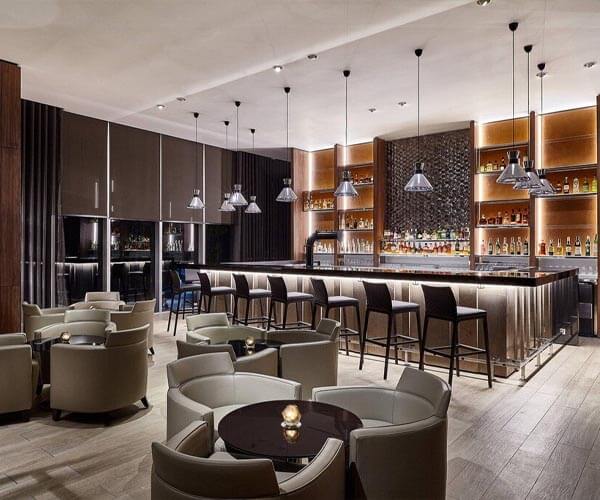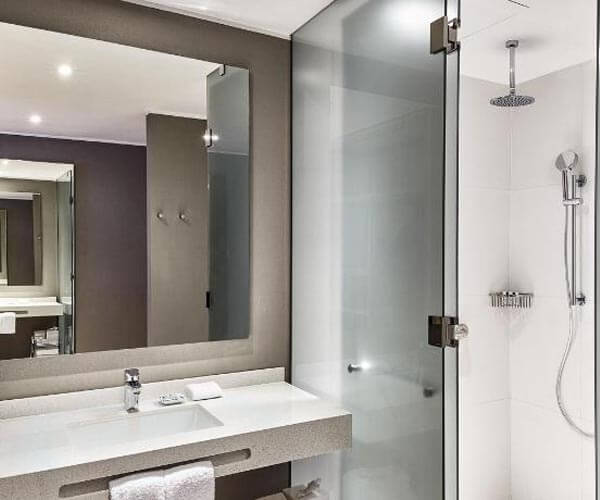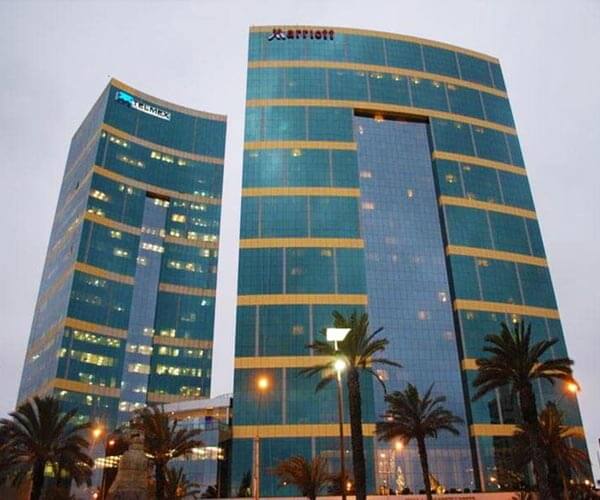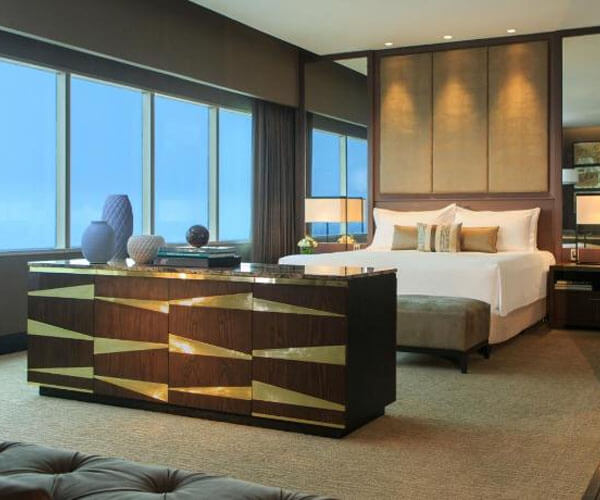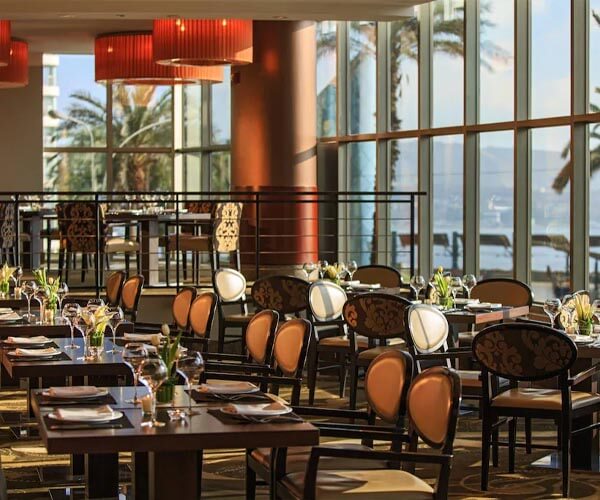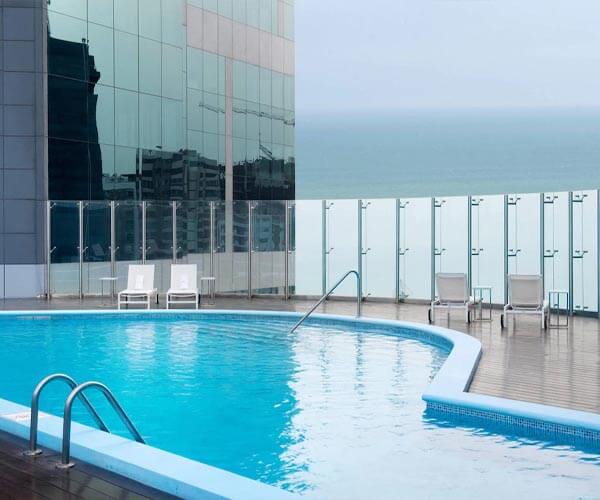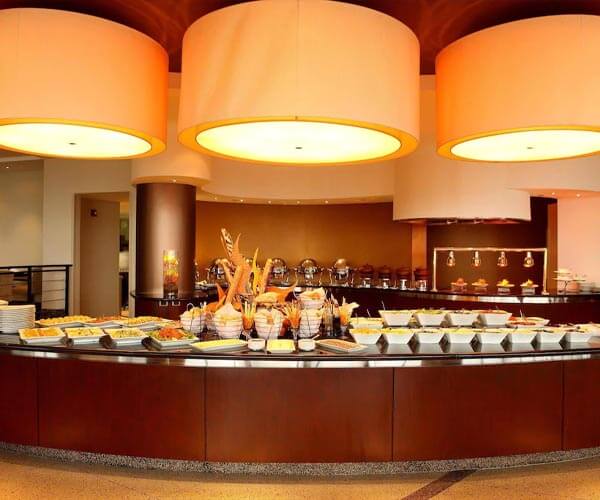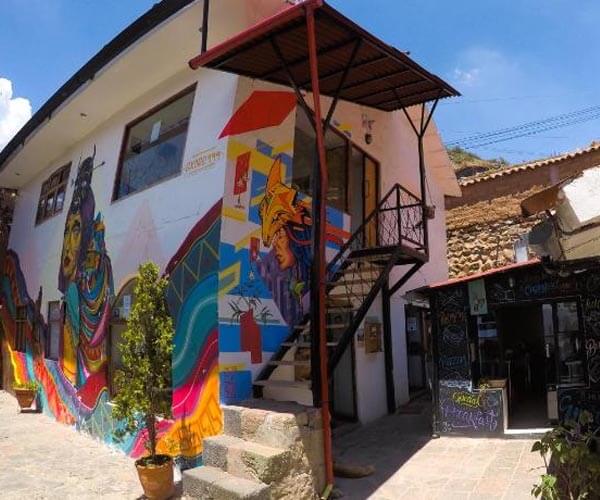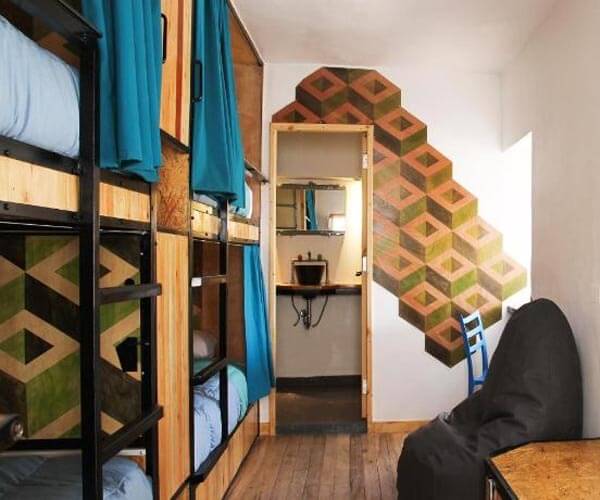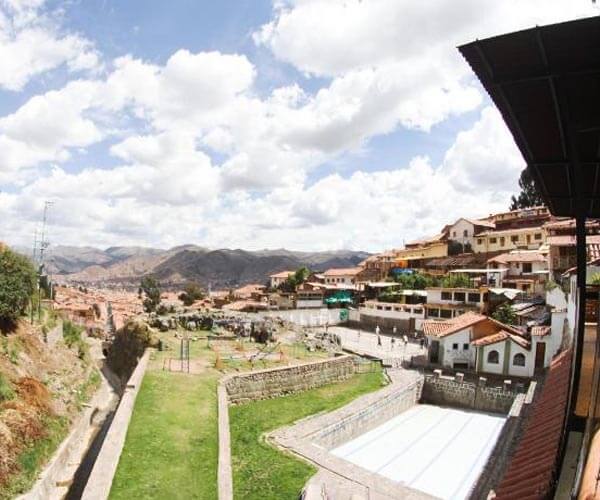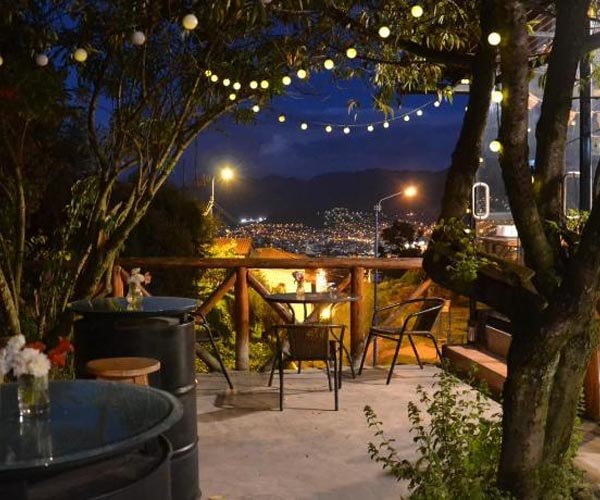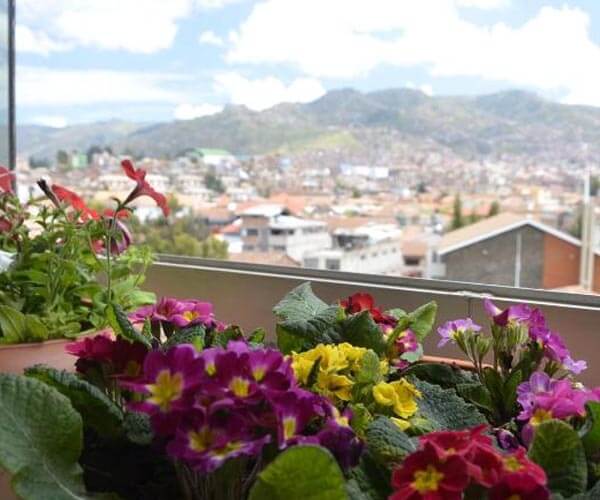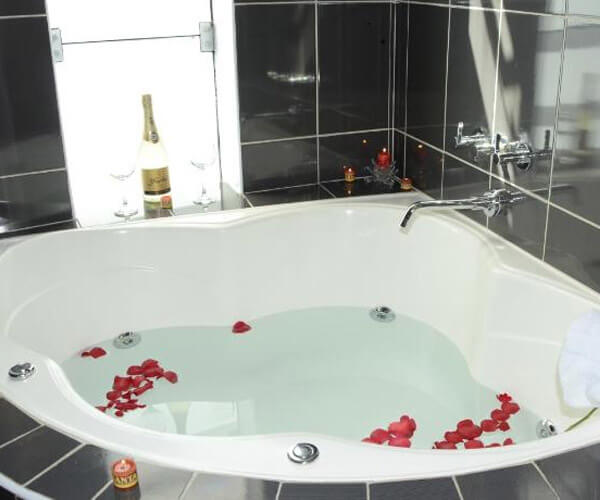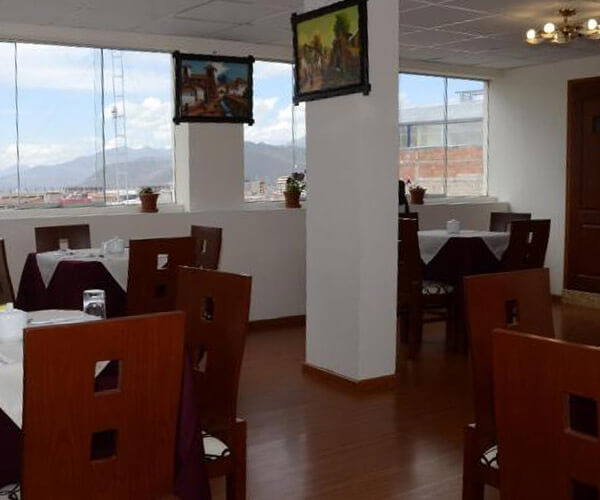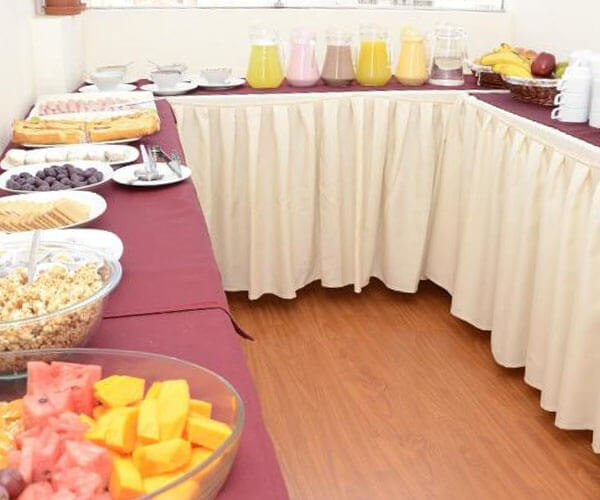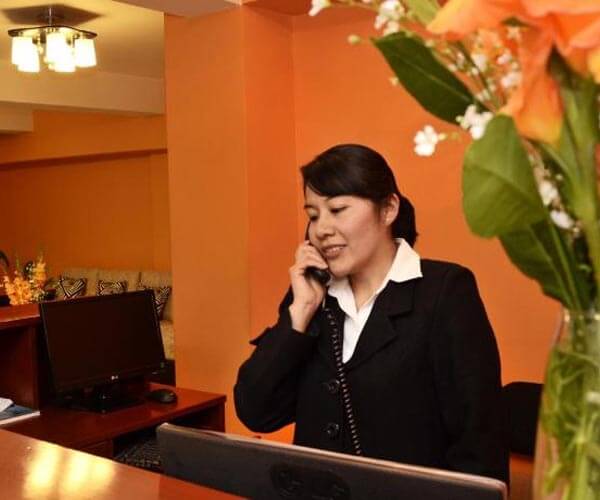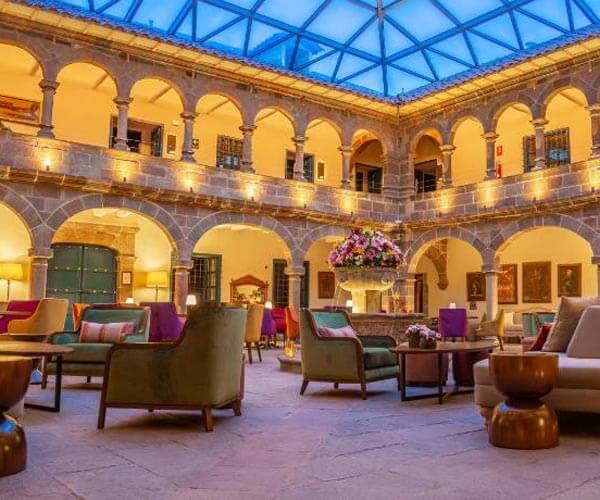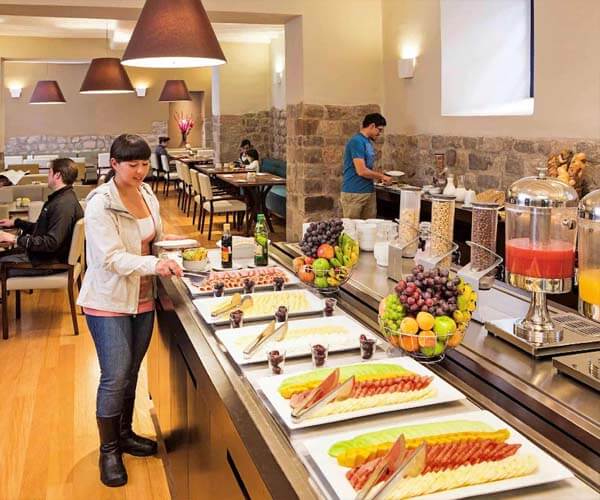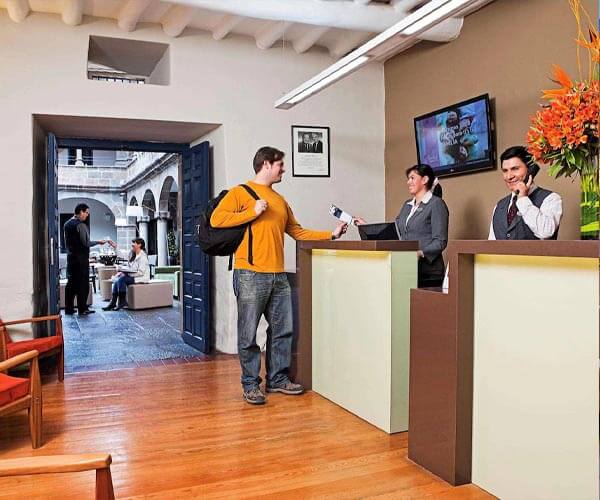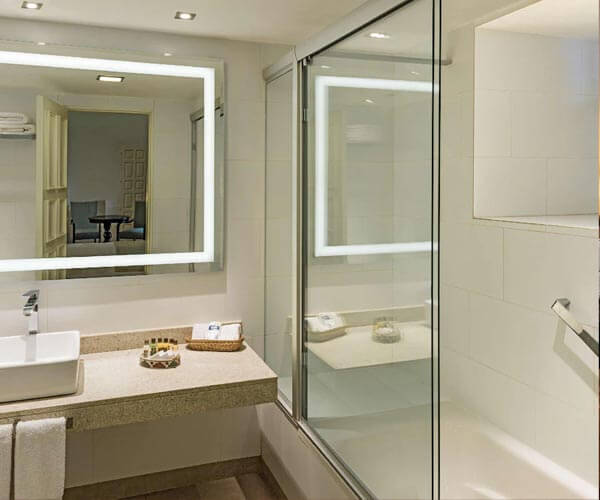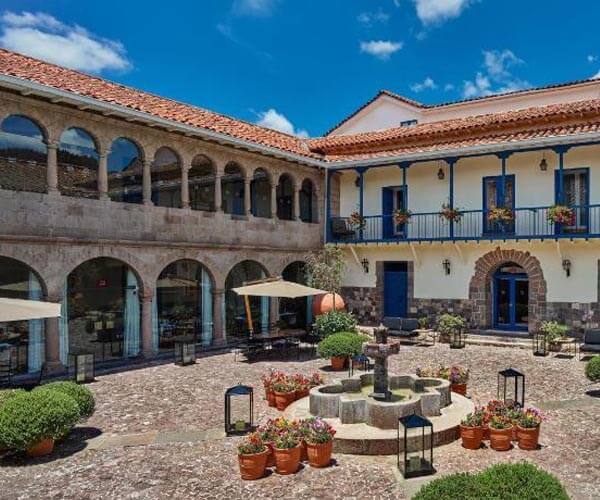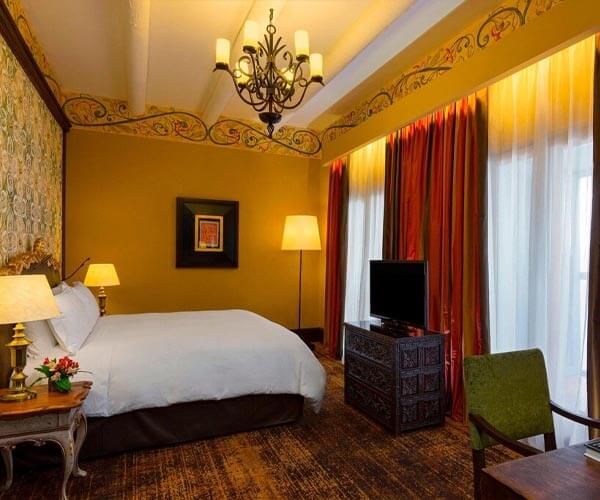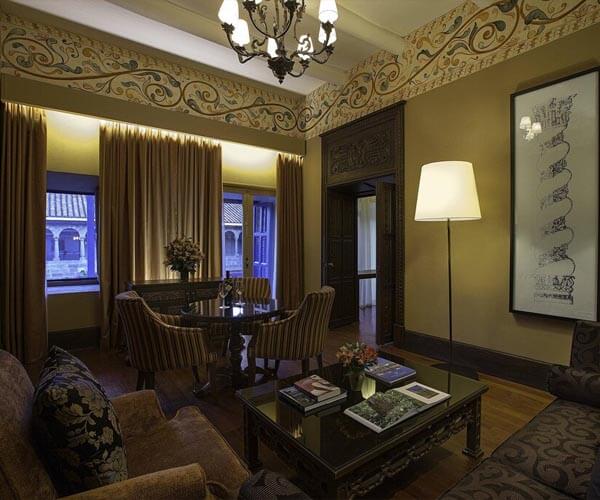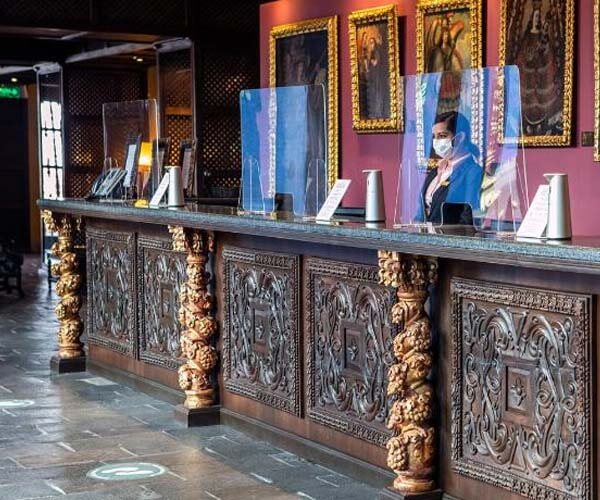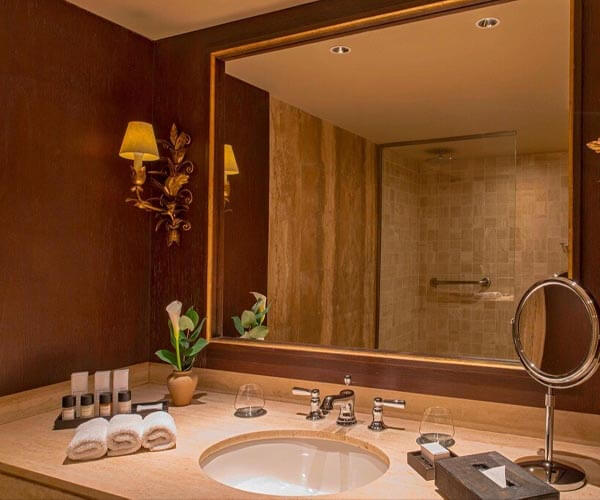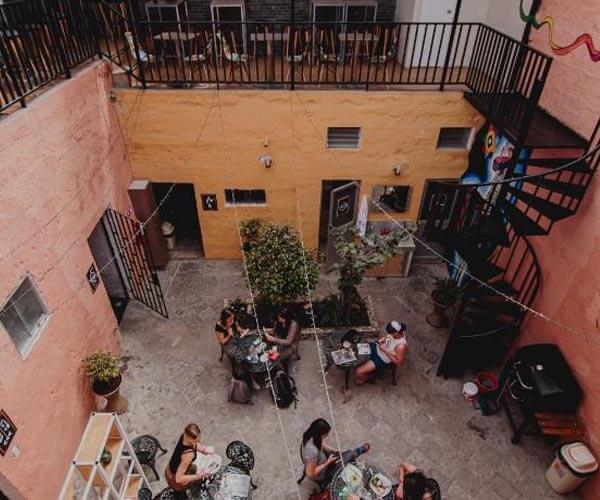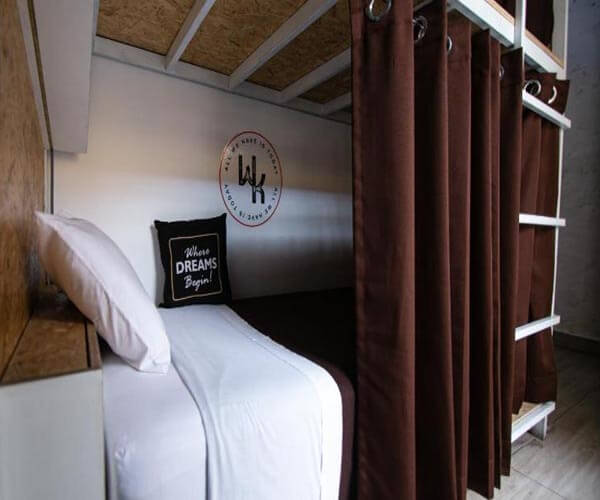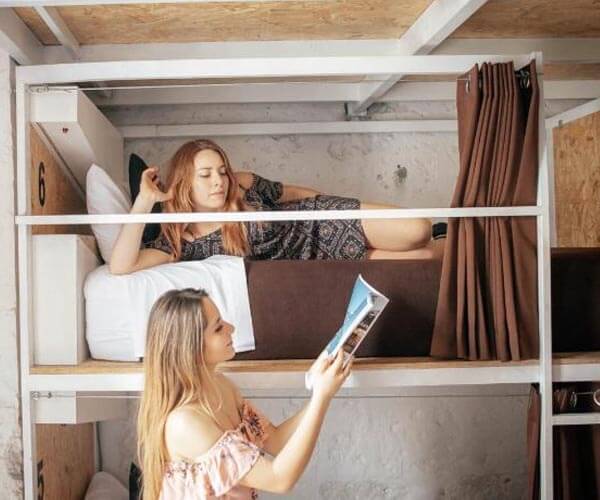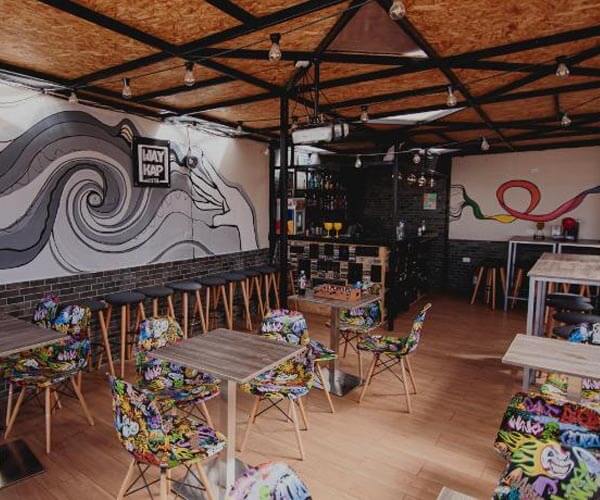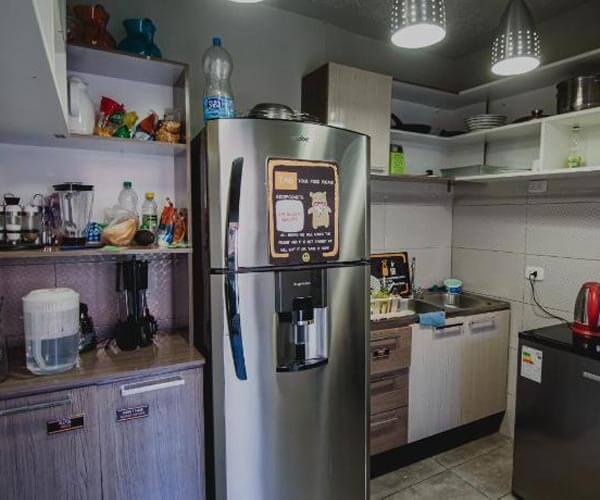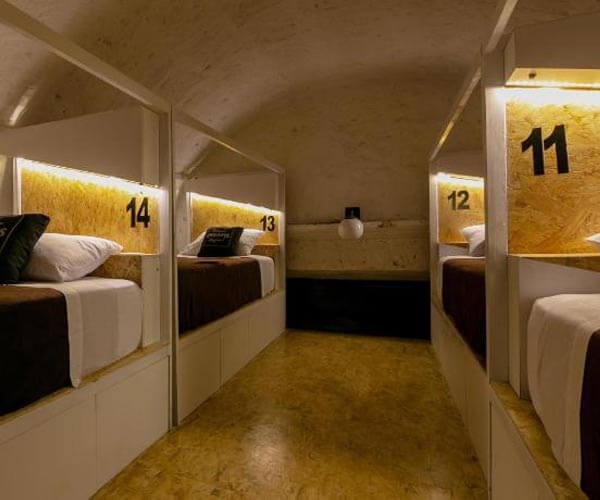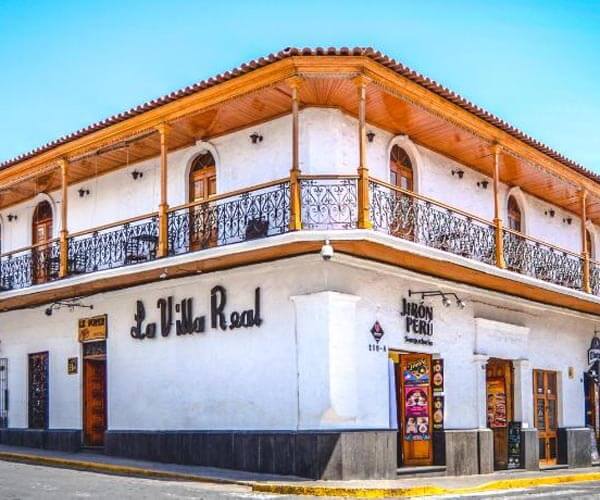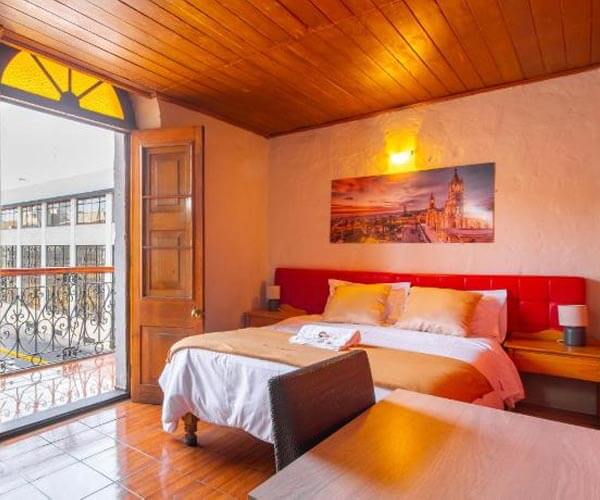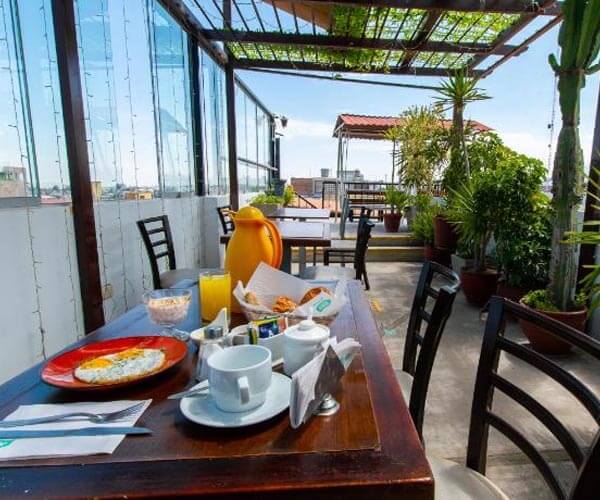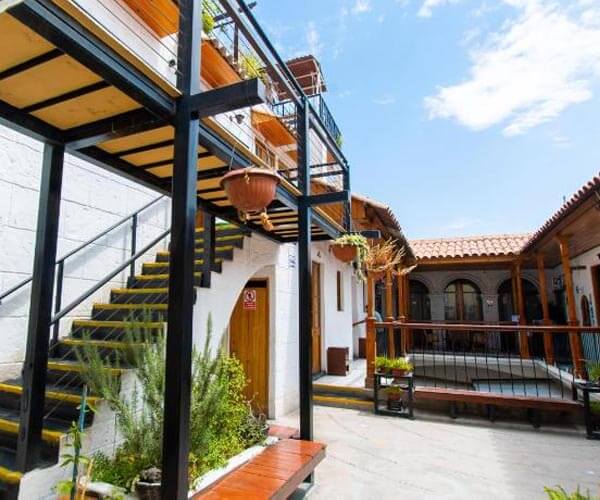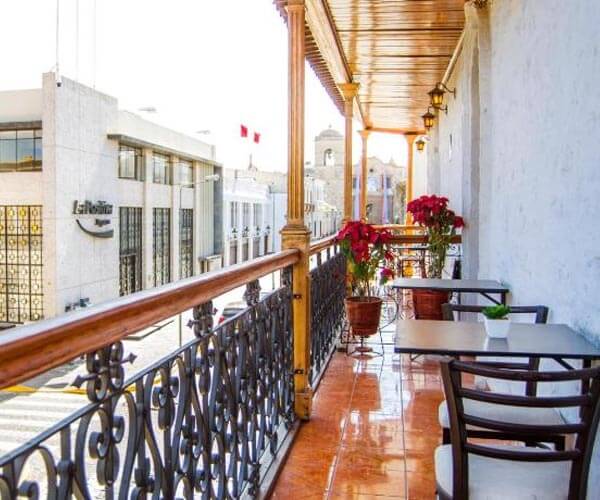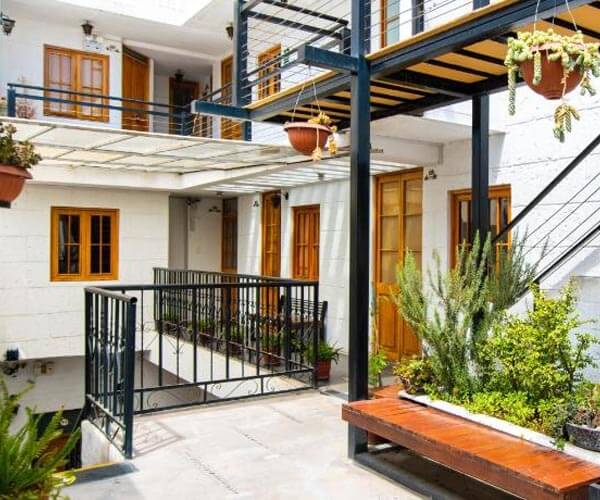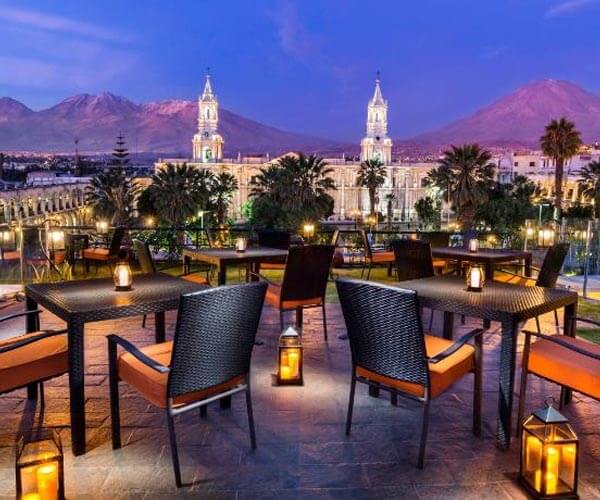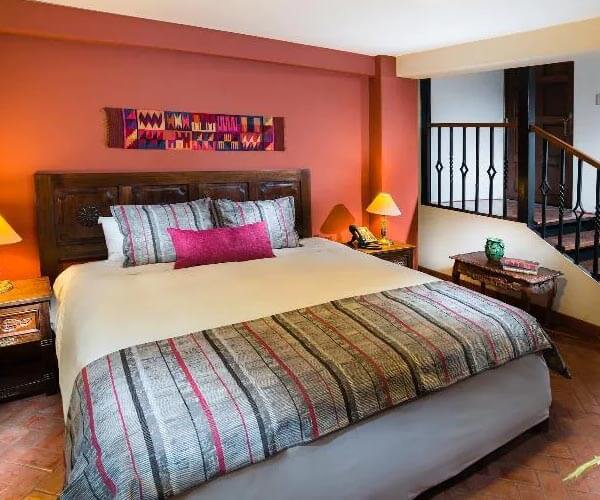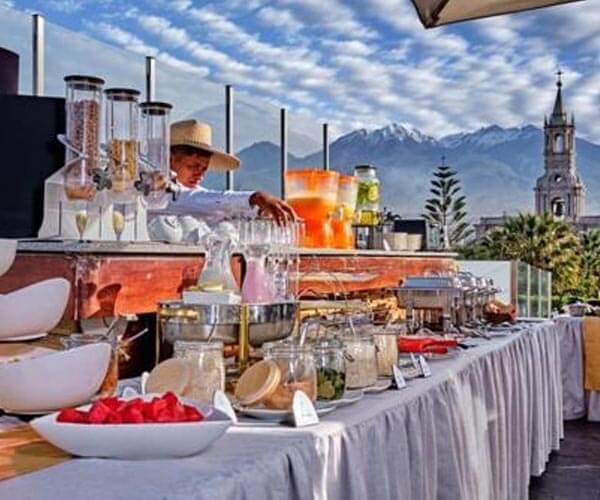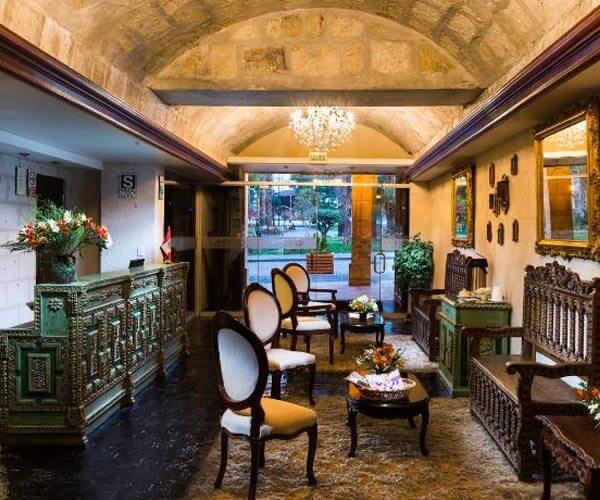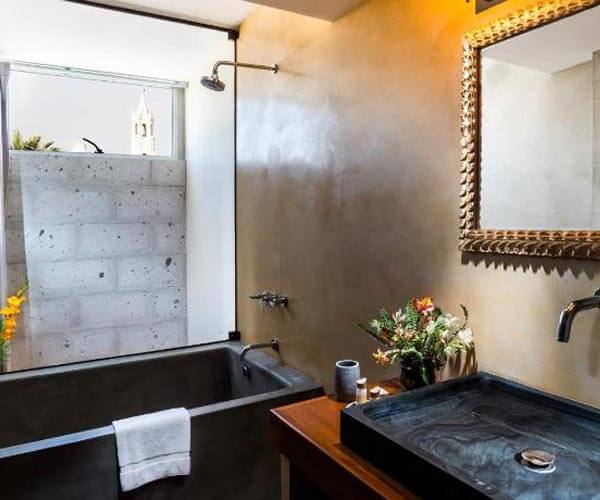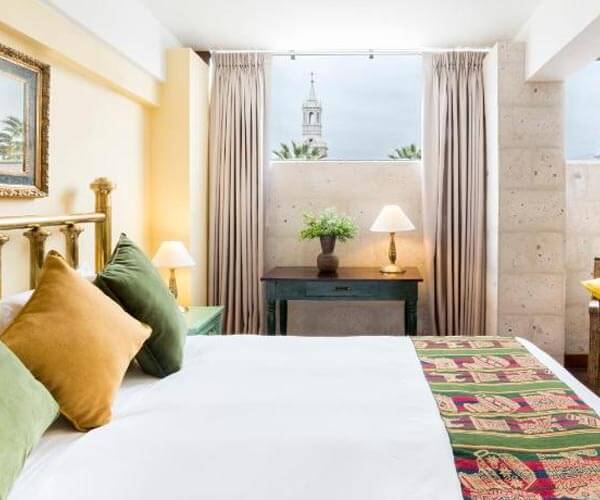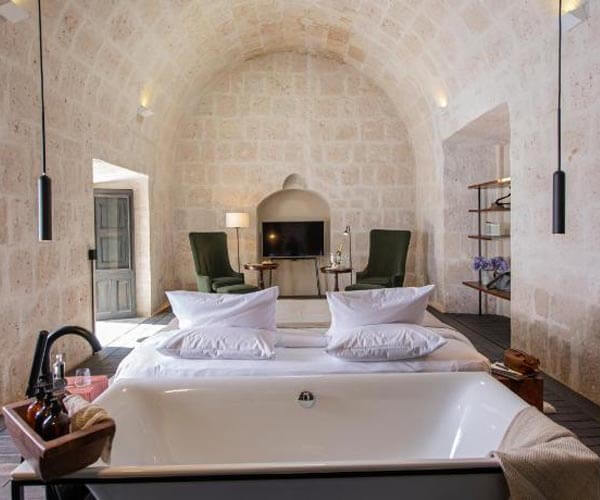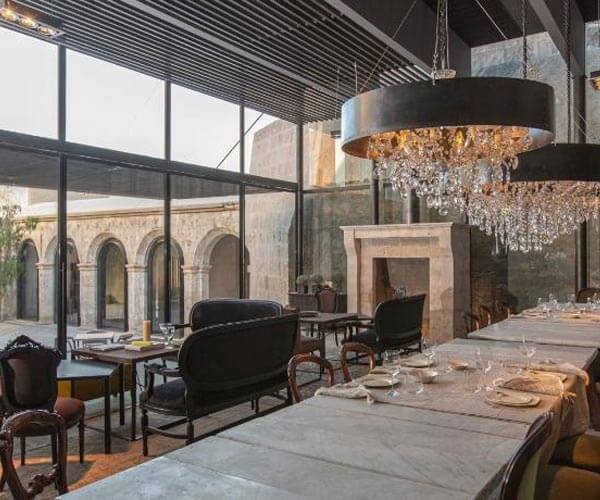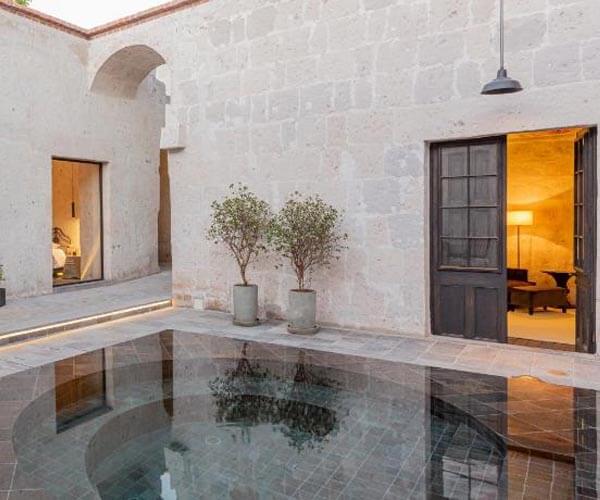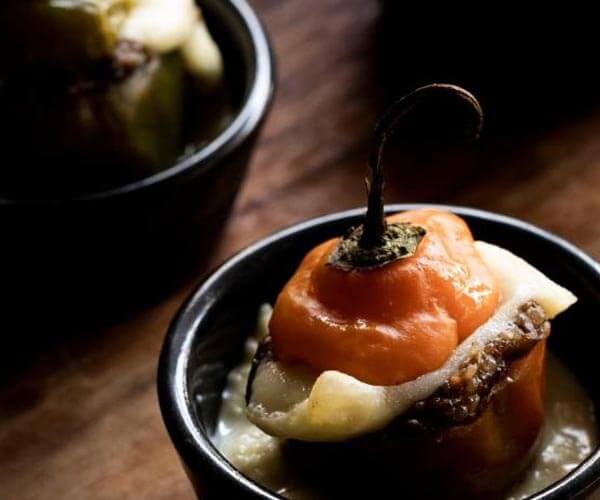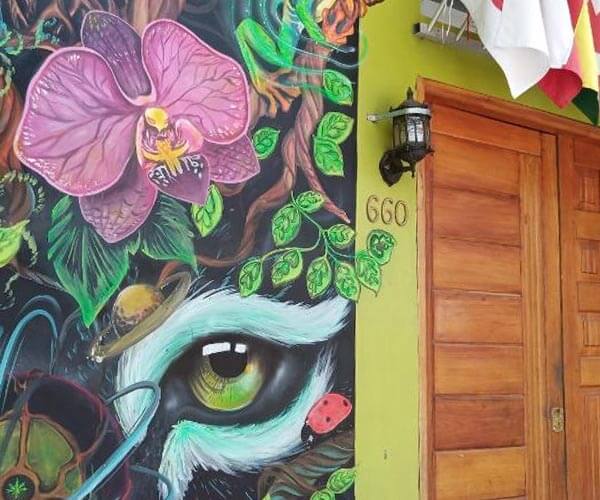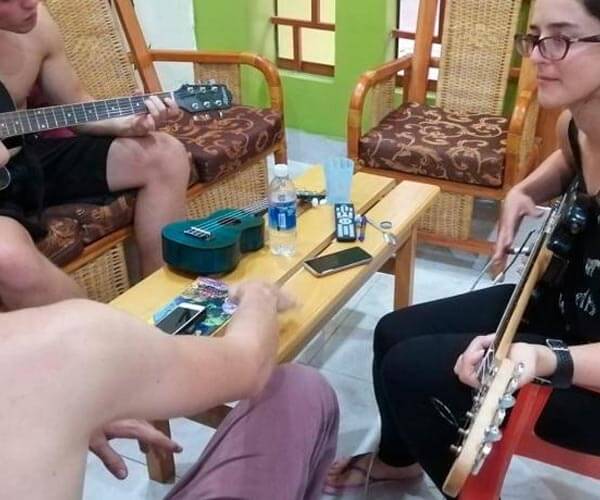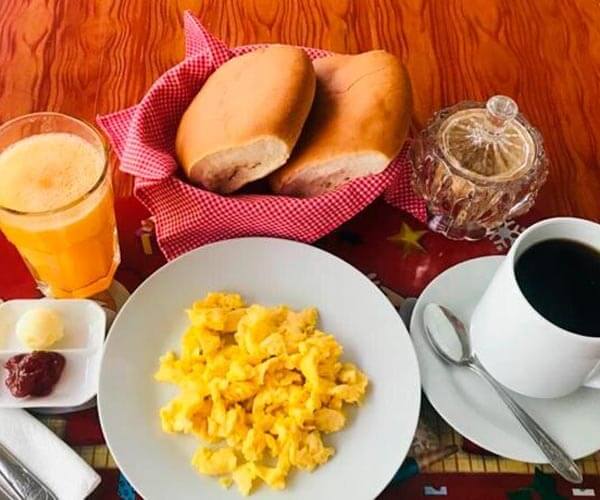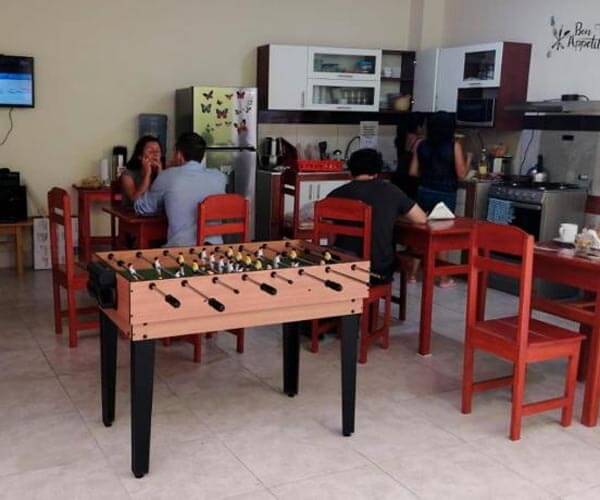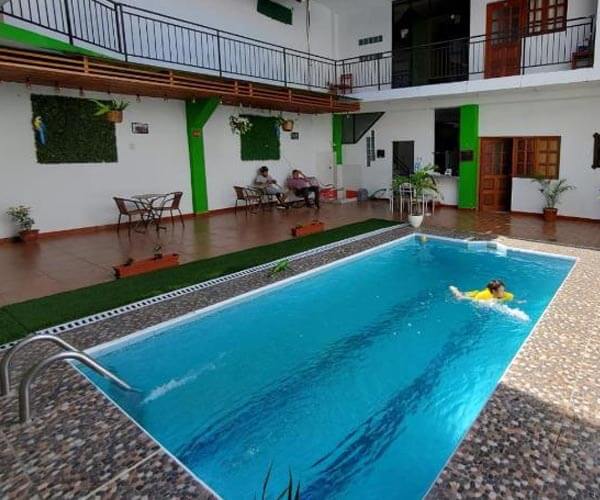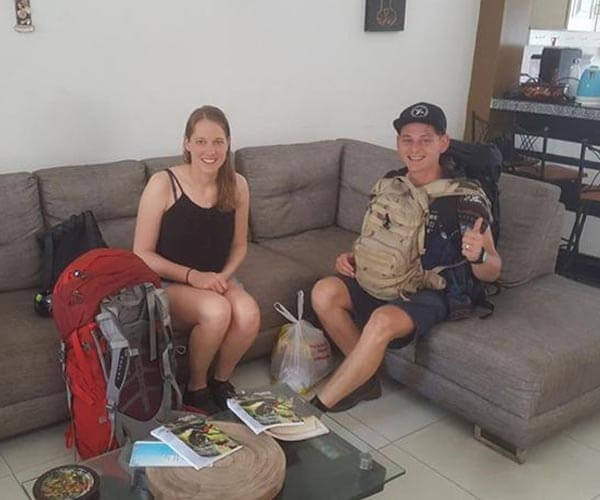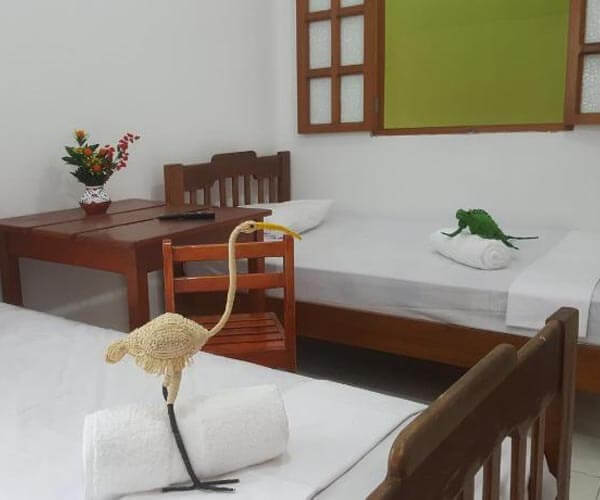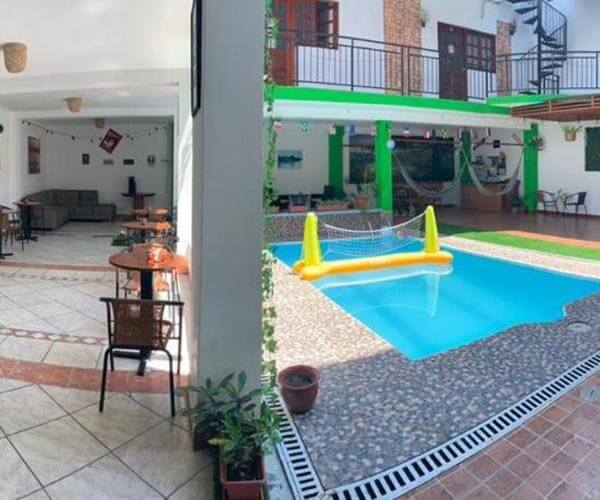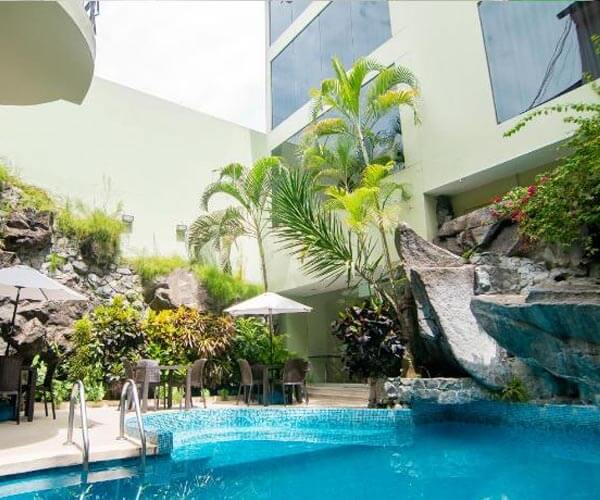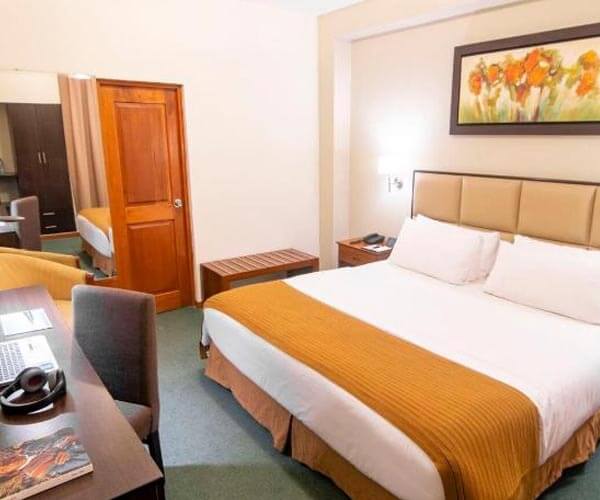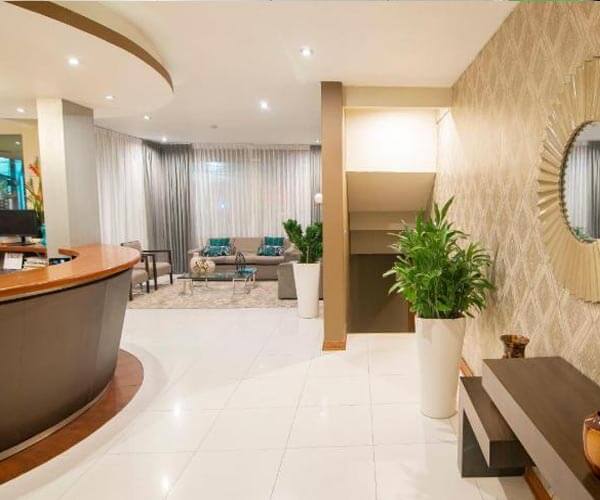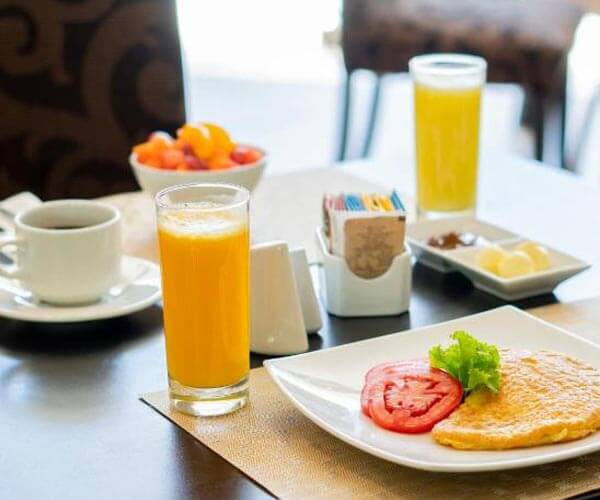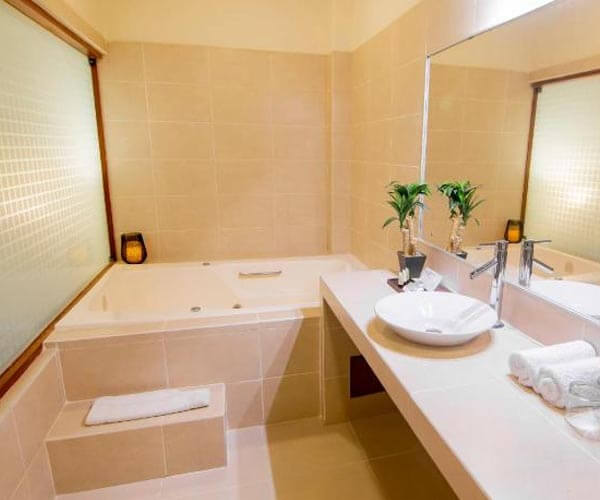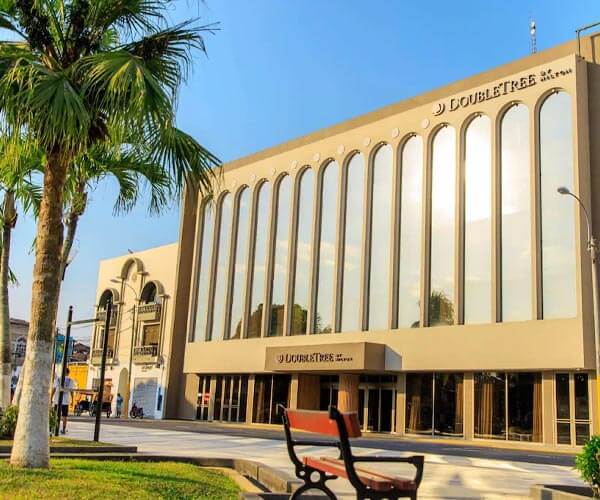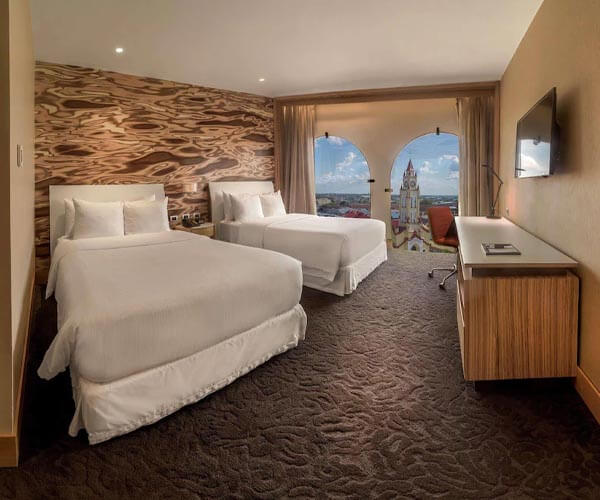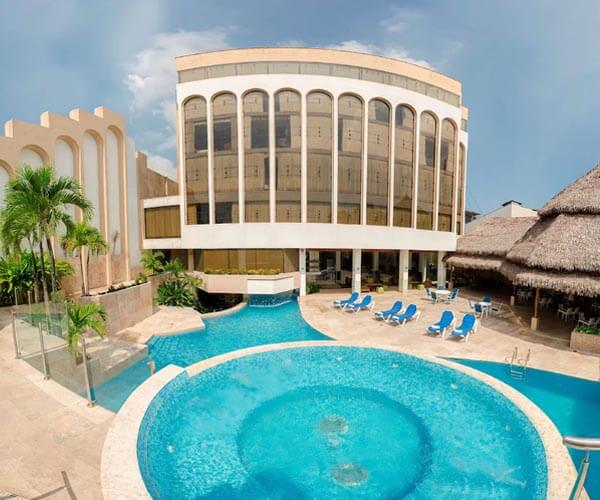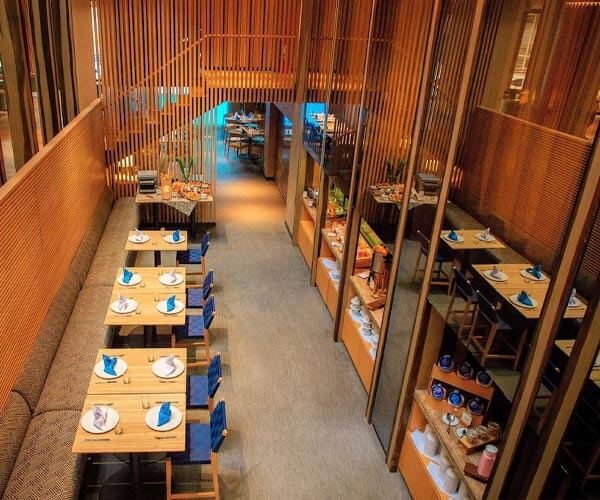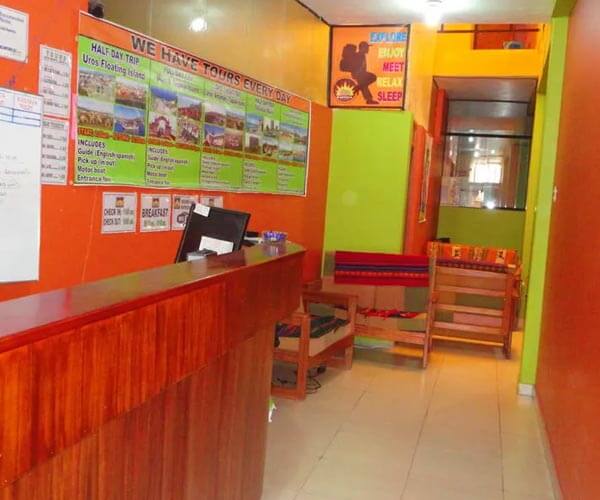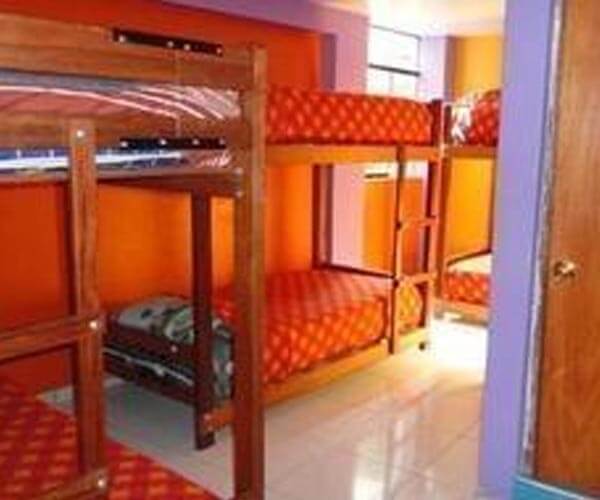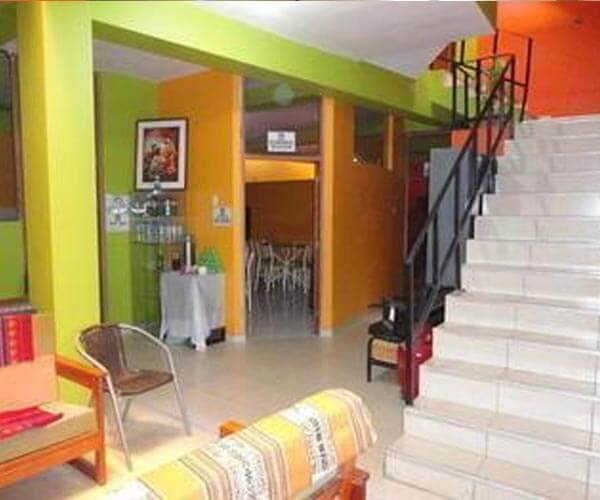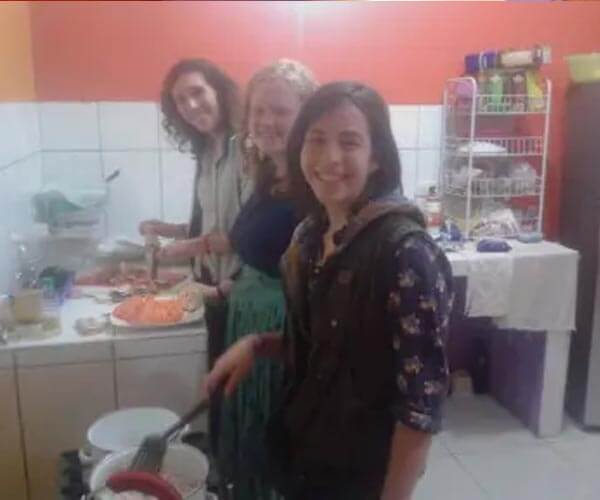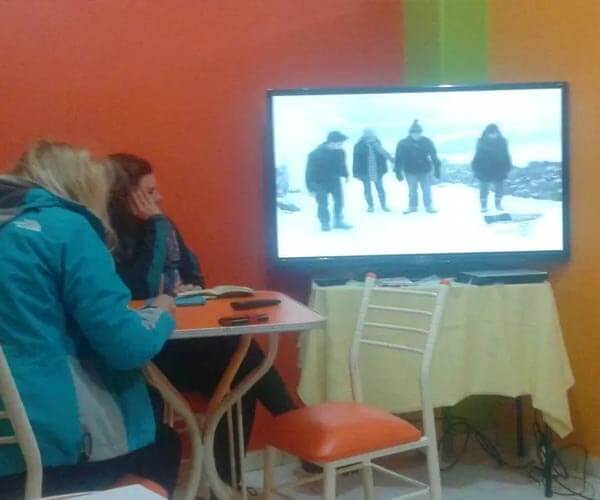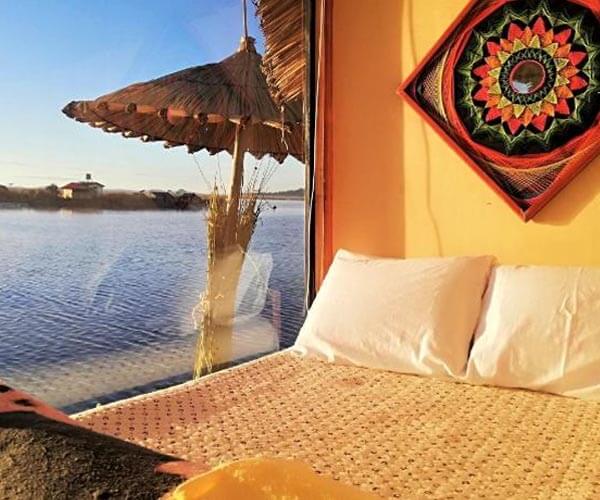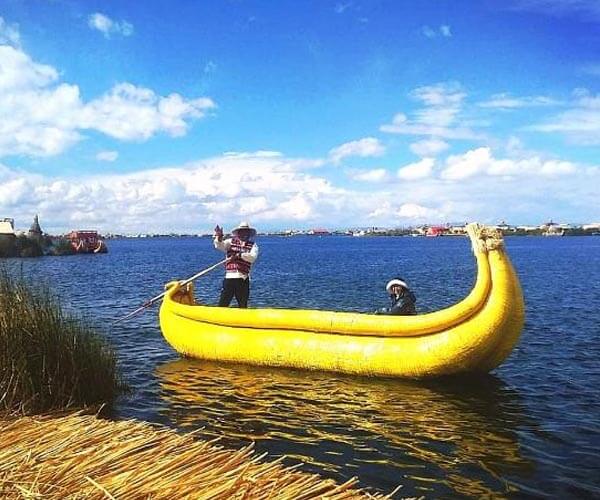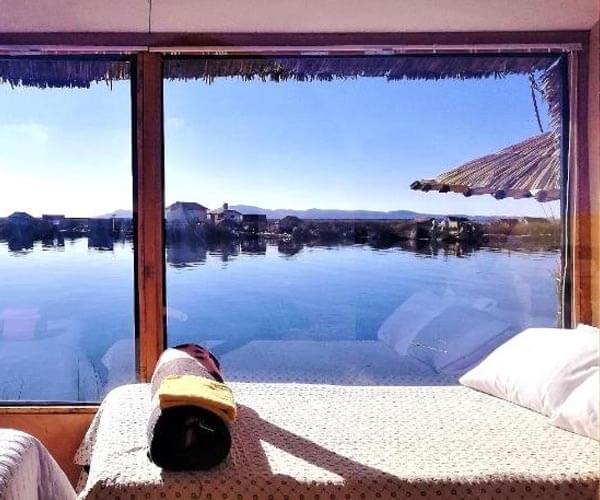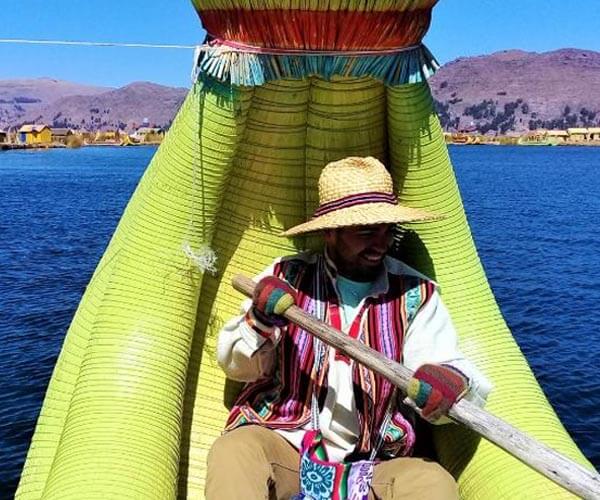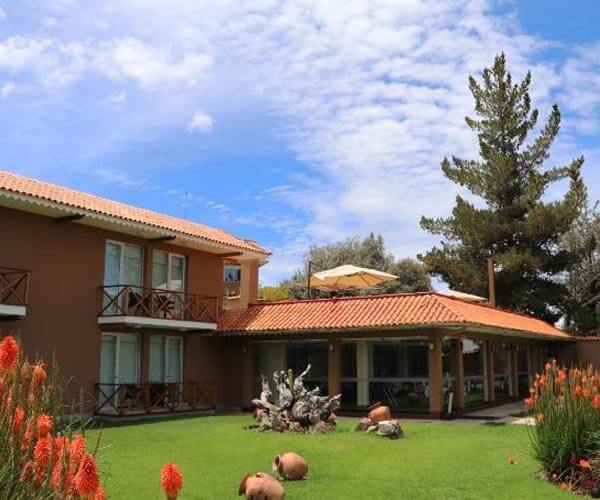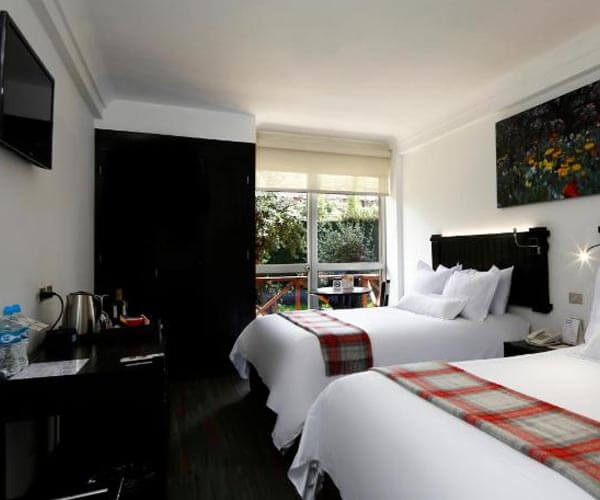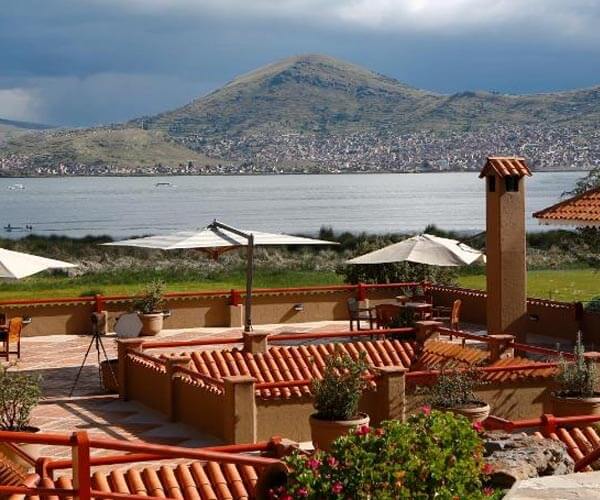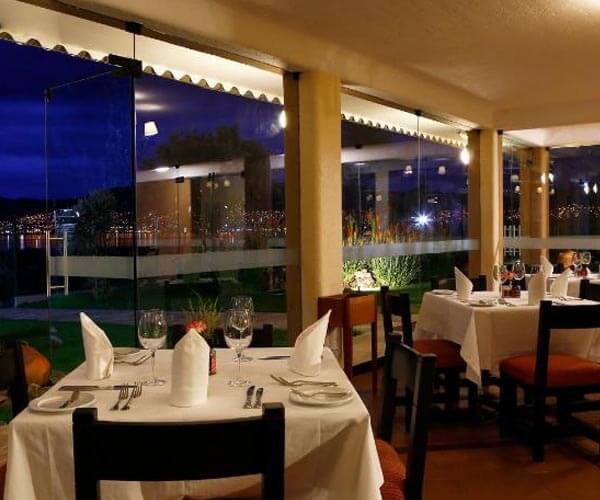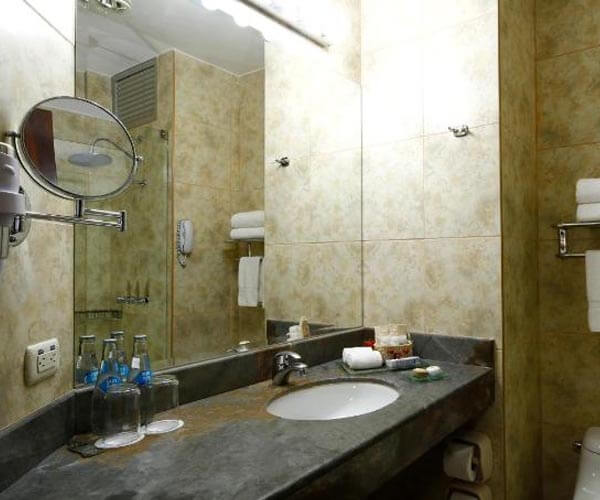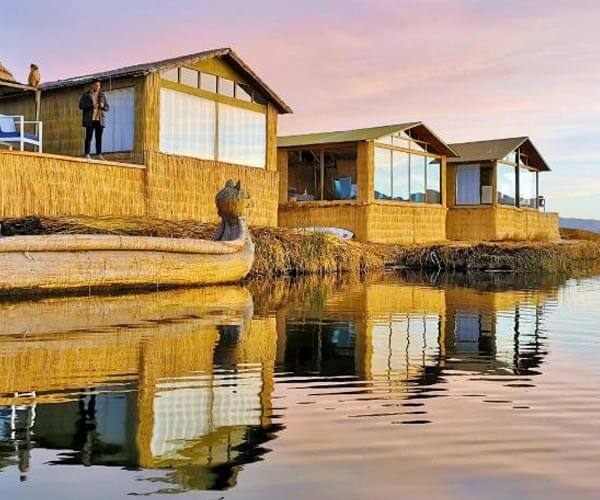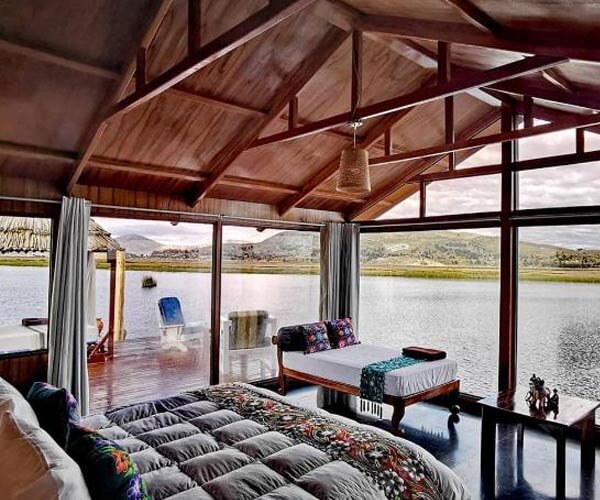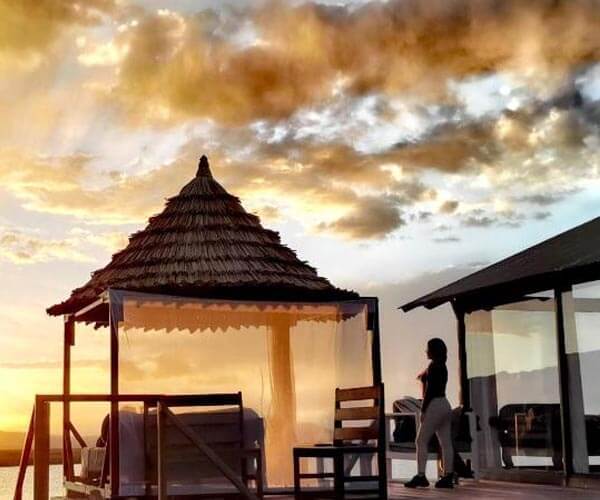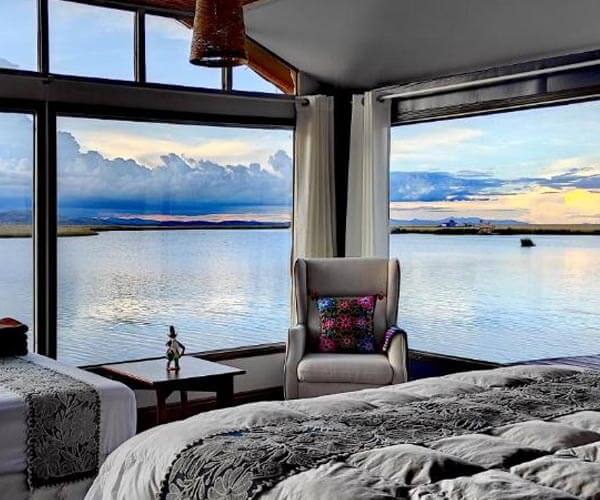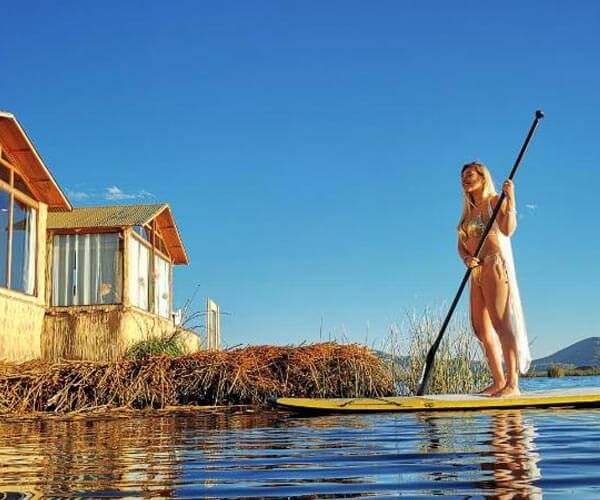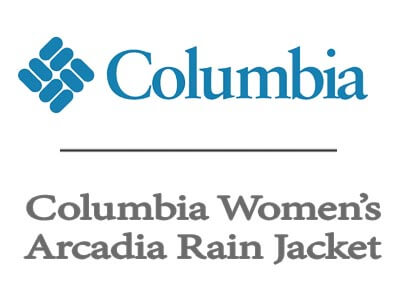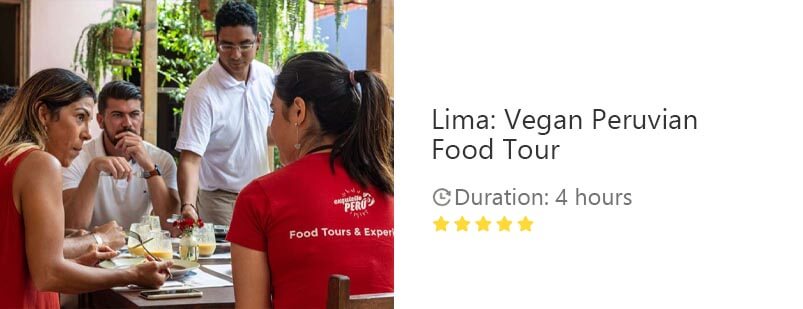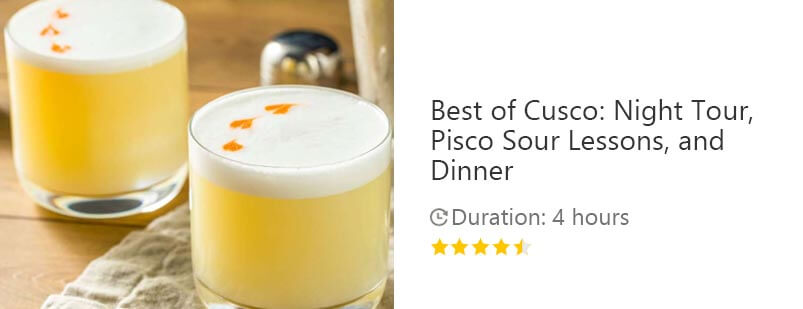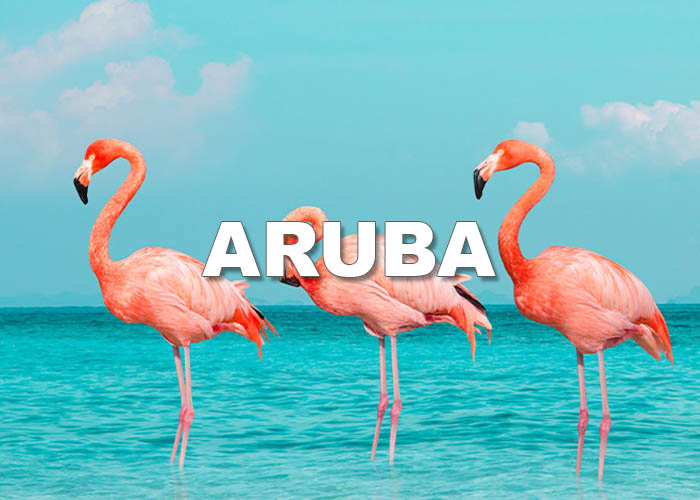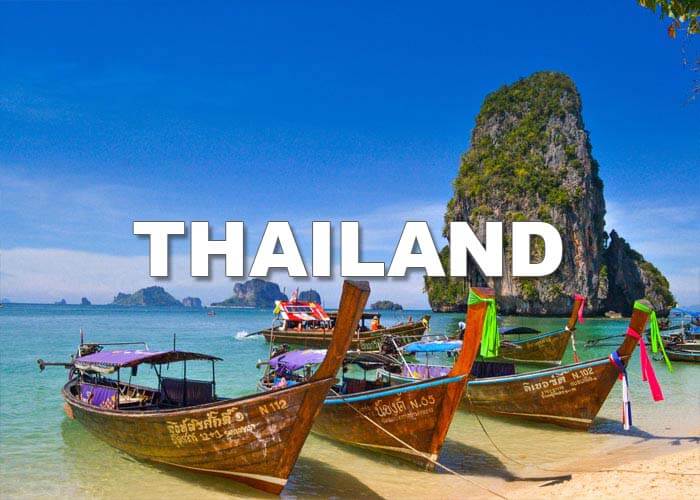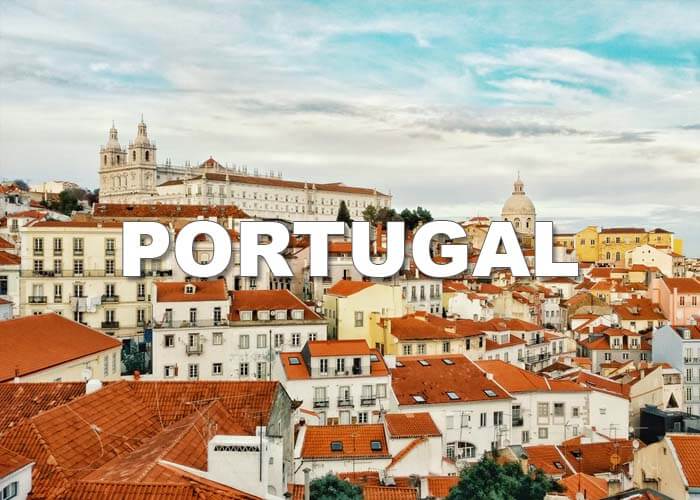
A Traveler's Guide To
PERU
This post contains affiliate links, where I make a small commission, at no extra cost to you. You can help support this site, simply by using my links when booking your accommodation or purchasing your travel gear – which helps to maintain the site and keep it free of annoying ‘pop-up’ and ‘click-bait’ ads.
WHEN TO VISIT • VISA’S • CURRENCY • VOLTAGE • LANGUAGE • FESTIVALS • TOP THINGS TO DO • BEST PLACES TO VISIT • HEALTH CARE • LAWS • SCAMS • SAFETY • ACCOMMODATION • TRANSPORTATION • WHAT TO PACK • GROUP TOURS • WHAT TO EAT • SUGGESTED READING • MONEY SAVING TIPS • FUN FACTS • FINAL THOUGHTS
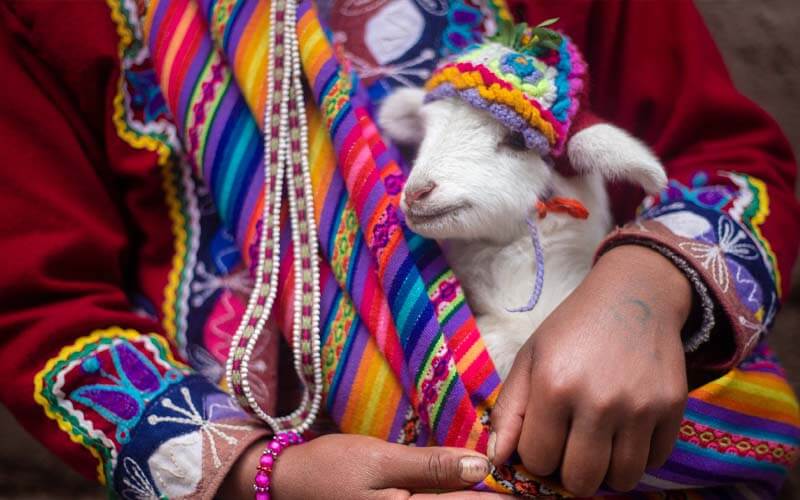
Girl and baby alpaca
Peru is a bucket list destination for many and one of the most popular countries to travel around in South America, for good reason. Luckily, I’ve had the opportunity to travel to Peru several times and also get off the beaten path. My aunt actually lives there half of the year, so I’ve been fortunate enough to see the local side of Peruvian life.
Tourists flock here to hike the Inca Trail and see Machu Picchu, Rainbow Mountain and the Amazon, and while those areas of the country get the most attention – Peru literally has it all. The entire country is incredible and has a ton of things to see and do. Diverse landscapes, a rich history, mystery, adventure, architectural marvels, wildlife, vibrant customs and delicious food – there is just so much to discover.
Use this travel guide to start planning your dream trip to Peru and get the low down on what to do, my suggestions on where to stay, how to save money and so much more…

LIMA
Capital City

When to visit Peru?
The answer of when to visit Peru depends on which area you want to visit, as there are three main climatic regions; The Pacific Ocean coast is one of the driest deserts in the world. The Andes mountains have a variety of microclimates depending on elevation, from temperate to freezing and from wet to dry. The Amazon has a tropical climate, with an abundant precipitation season.
For visiting The Pacific Ocean Coast and where the capital city of Lima is located, Jan – March are the ideal months. That’s when the sky is clear and the ocean temperatures are great for swimming. The rest of the year the gray coastal mist known as ‘garua’ moves in and the sun hides more often then not.
Trekking in the mountains, including the Inca Trail, visiting Machu Picchu and Cusco the best months by far to visit are between April – November, during the dry season.
The best time of year to visit the Amazon is during its dry season, which is between May – Sept. While always hot and humid in the dry season, the mosquitoes are fewer and many animals stay closer to the river.
*Note: Peruvians travel in huge numbers around July 28, the national holiday. Finding accommodation in popular destinations around this time can be difficult. If you do plan on being in Peru during this time, be sure to book your accommodation well in advance.
| Wed | Thu | Fri | Sat | Sun | Mon |
| +19° | +19° | +19° | +18° | +18° | +19° |
| +15° | +15° | +15° | +15° | +15° | +16° |
| Wed | Thu | Fri | Sat | Sun | Mon |
| +66° | +66° | +66° | +65° | +65° | +66° |
| +59° | +59° | +59° | +59° | +59° | +60° |

VISA'S FOR PERU
Travelers from most countries in the Americas and Western Europe do not need a tourist visa to enter Peru. While citizens of Argentina, Brazil, Paraguay, Uraguay, Columbia, Bolivia and Chile may enter the country with their just their national identification cards. A great resource to know if you require a visa, for any country, is passportindex.org
The maximum length of stay that the authorities grant to tourists is 183 days (in a 365 period) which cannot be extended. If you wish to stay longer for other reasons, such as business, studying or working – you will need to request the relevant visa at a Peruvian consulate in your own country.
In addition, many countries require travelers to have passports with at least 6 months of remaining validity as an entry requirement. Some require the passport be valid for six months from the date of entry while others require six months validity from the date of departure. Because this can change (for example some countries will accept 3 months) it’s always best to check the current passport validity requirements, before booking your trip to Peru.

CURRENCY IN PERU
The currency in Peru is the Nuevo Sol (PEN). Notes are issued in denominations of 10, 20, 50, 100 and 200 soles and the coins are issued in denominations of 5, 10, 20 and 50 centavos. The US dollar is the second currency, accepted commonly by hotels, shops, taxis and restaurants across Peru.
Peru is still largely a cash society and in smaller areas you will find it difficult to use credit cards, so make sure to always have some cash on hand (especially in smaller denominations).
Money exchanging tip
Automated teller machines (ATM’s) are the best way of getting cash in Peru and always give you the best exchange rate. You can withdraw money in either Peruvian soles or USD and screen instructions are in English as well as Spanish. In Peru, I suggest always using a bank ATM, to reduce the risk of card skimming. Scan the area for suspicious looking characters and cover your pin while typing.
‘Money Changers’, wearing colored smocks with “$” insignias, can be found on the street in many cities. They offer current rates of exchange but if you do use them be sure to count your money carefully and to check their condition. Many Peruvians will not accept bank notes that are not in good condition and visitors are wise to do the same when receiving change. Do not accept bills with tears (no matter how small) or bills that have been taped.
*NOTE: If an ATM or a POS (payment terminal) ever offers to convert the charges to your home currency, always refuse this option. This is called ‘Dynamic Currency Conversion’ and the exchange rate will not be in your favor, so just choose ‘no’.
How to keep your valuables safe?
One of the most important aspects of travel is keeping your cash and personal belongings safe. Not many things can ruin your trip like theft can. I personally do this by carrying all valuables in my ‘anti-theft’ carryon backpack while my boyfriend has a secret cash stash in his money belt.
You may not think of beaches when you think of Peru, but the 1500 miles of stunning Peruvian coastline would say differently. With many beach clubs and the incredible surf life, the beach is where you’ll want to be spending some of your time. However an important thing to think about is how to keep your valuables safe on the beach? I love my portable vault when I go for a dip in the sea or at the pool, which I simply attach to my beach chair or table for peace of mind.
Another creative way is to hide your stuff in ‘plain sight’ is with these fake sunscreen bottles or my ultimate DIY trick wrapping valuables in a diaper (to make it looked used). You can bet your bottom dollar nobody’s running of with that!!!

VOLTAGE IN PERU
In Peru, the standard voltage is 220V with a frequency of 60Hz, and there are two types of plug sockets used across the country (Type A and Type C).
If you are coming from Europe, Africa, Asia, Argentina, Chile, Uruguay or Paraguay: You will mostly likely not need an adapter. But if you come from Canada, USA, Mexico, Central America, Venezuela, Colombia, Brazil and Ecuador: You will most likely need an adapter.
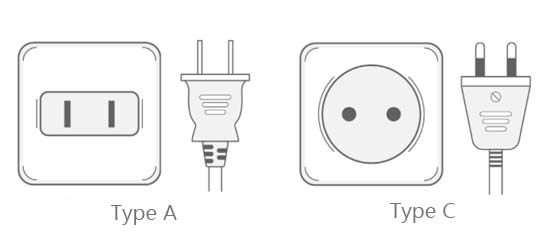
Travel Adapter and Power Bank
Ensuring that you have the right plug when traveling is super important, especially with the voltage compatibility. Just because you can fit it in the hole, doesn’t always mean that you should! By using the wrong voltage not only can it be extremely dangerous, but it could destroy your appliances and/or electronics. As voltage can differ from one country to another you may need to use a voltage converter while in Peru.
It’s always safest for you to use a universal power adapter. I travel to a lot of different countries and never leave home without mine. There are lots on the market but this one covers every region of the world, comes with USB ports, is super cheap and light weight. That’s everything you will ever need in an adapter and you’ll have the peace of mind that you won’t fry your devices.
Another thing I never travel without is a portable power bank. I’ve had a few so far but the best performing one, without a doubt, is the Anker PowerCore. It’s small, lightweight, comes with 3 high speed USB ports and one battery life is capable of fully charging your phone multiple times before it needs another charge.

LANGUAGE IN PERU
There are 3 official languages in Peru; Spanish, Quechua and Aymara. However in the Amazon jungle regions, the natives speak another 13 different indigenous languages.
I believe that learning a language (or at least trying to) is a big part of traveling well. I always recommend learning some basic words and phrases in any country that you plan to visit. The locals always appreciate your effort and it can be a truly rewarding experience.
To help you get started, I have compiled a few basic Spanish words, for your travels around Peru;
HELLO
YES
NO
THANK YOU
→
→
→
→
Hola
Sí
No
Gracias
GOODBYE
TOILET?
SORRY
DELICIOUS
→
→
→
→
Adiós
Baño?
Lo Siento
Deliciosa (f.) / Delicioso (m.)
Interested in learning Spanish?
Or any other language for that matter… If you really do want to challenge yourself further and learn more than just the basics, I highly recommend checking out the language learning program uTalk. It’s super fun, interactive and available in 140 languages. I am using it myself currently to learn Croatian.
Alternative ways to communicate
Not being able to communicate while traveling can be frustrating but remember that this is your problem, not theirs. Raising your voice doesn’t magically make people understand English.
Even if your language skills aren’t up to par there are still a few other ways to communicate. You can try with miming, images on your phone or by pointing at symbols on my universal symbol travel tee.
It has 90 useful icons that come in either black or white print, with multiple shirt colors for you to choose from.
Of course, there is also always Google Translate you can use, which is ok for a quick translation but if you want to translate speech and to have any meaningful conversation, it’s pretty useless. That’s where an electronic translator comes in.
Thanks to artificial intelligence, what once seemed like science fiction now has became a reality. The CheetahTALK is not only sleek and easy to carry around, at the press of just one button it provides extremely accurate and instant 2-way conversations.

FESTIVALS IN PERU

Virgen del Carmen
Peru’s fiestas are colorful displays of the country’s history, culture and traditions. If you’re traveling to Peru, attending one of these celebrations might just be the highlight of your trip. From festivities with origins stretching back thousands of years to Catholic celebrations introduced by Spanish colonists, Peru’s festivals have diverse influences. One thing is for sure though and that is they all include dancing, singing and people coming together to celebrate Peruvian culture.
CARNAVAL (February)
Carnaval is the week of celebrations leading up to Lent, usually held in February. This festival rooted deep in Catholic traditions, was brought to Peru by the Spanish. It is celebrated widely across Latin America and Peru is no exception. The party is countrywide, but Cusco is central to the action. There are spectacular parades through town with distinct colorful outfits and dances on full display. In addition, people spray water on each other, in a tradition that dates back to the seventeenth century. If you go to Carnaval in Cusco, make sure to take your water balloons and get ready to be immersed in a riot of vibrant color and water fights!
LA VIRGEN DE LA CANDELARIA (February)
This festival takes place in Puno on the days around Candlemas, in early February, and is the most important festival in the region. Held on the shores of Lake Titicaca it celebrates the Virgen Candelaria ‘the patron saint of Puno’ and is one of the greatest folk religious festivals in South America. The roots can be traced back to Andean celebrations of Pachamama, which honors the Earth mother (believed to help with good weather and bountiful crops). Puno overflows with performers during the festival, with thousands of dancers and musicians coming together. The masks and costumes worn by performers are expressions of cultural pride and a true sight to see, with some of the most fantastic costumes and masks seen anywhere.
LA VENDIMIA (March)
La Vendimia is Peru’s festival for wine lovers. The festival celebrates both wine and pisco (a type of local brandy) and is held over 10 days in the second week of March each year. Taking place in Ica, the center of traditional Peruvian wine country, the festival began in 1958 and shines a bright light on Peru’s grape harvest. Attending this festival is your opportunity to sample from different makers and learn more about the wine industry in Peru. During the celebrations, of course, you’ll also see your fair share of colorful street processions, dancing, fireworks, grape stomping and an array of local delicacies to soak up all that wine. Eat, drink and be merry!
VIRGEN DEL CARMEN (July)
Virgen del Carmen is one of the biggest events in Peru and is held every year in July in the tiny colonial village of Paucartambo (a town four hours from Cusco). The festival dating back to the thirteenth century, springs from the story of a young woman who was on her way to Paucartambo, when she came across a head on the ground. The bodiless head spoke to the young woman and said its name was Carmen. The head granted wishes and made miracles happen in the village, so residents still celebrate her as their patron saint all these years later. During the festival, locals carry an image of Carmen through the streets, chasing away demons and bless onlookers. Dancers in masks and scary costumes leap onto rooftops and the procession ends in the cemetery, where people pay homage to the dead. If you plan on attending this festival, make sure you book one of the few accommodation available or bring your tent to camp with thousands of others.
MISTURA (September)
Food is serious business in Peru and the Mistura festival is the best way to discover all of the country’s gastronomic delights. Held in early September each year, the festival takes place in Lima. Globally renowned Peruvian chefs, producers, farmers, wine makers and street vendors from all corners of the country flock to the capital, bringing their regional delicacies with them. Take the opportunity to sample specialties like cuy (guinea pig), papa a la huancaína (saucy, boiled potatoes) or lomo saltado (a traditional stir fry). Lively music and dance performances, as well as a large market where you can stock up on local produce, round up this festival. Travelers can buy tickets to the event, while also signing up for guided tours to make the most out of the experience. Buon Appetito!
PACHAMAMA (August)
Peru’s festival dedicated to Mother Earth, Pachamama Raymi takes place in the first week of August every year. Celebrations unfold in Cusco (the former Inca capital) and locals give tributes to Pachamama to show thanks for the bounty of crops that support their communities. On the first day of August, farmers halt work on their land and prepare offerings as a sign of respect to Pachamama. The first plate of food from the feast they prepare is given to Pachamama and any other offerings are buried in the ground. Just like any other festival in Peru, you can also expect lots of festive dancing, music and games.

TOP THINGS TO DO IN PERU
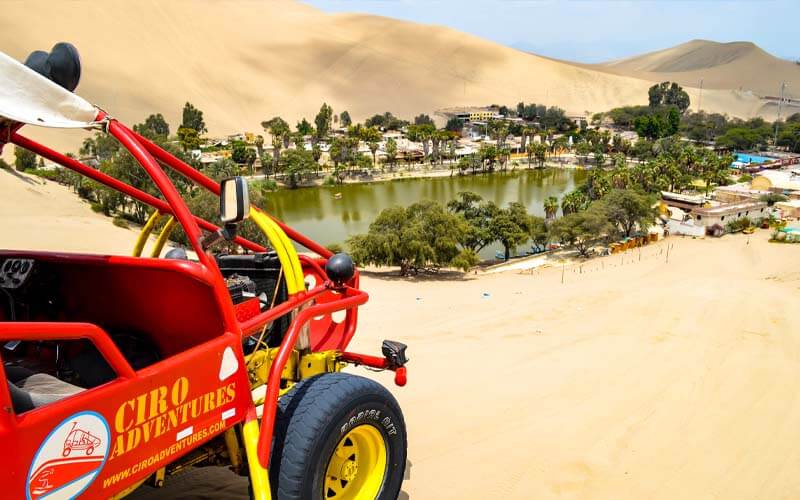
Huacachina
Visit Machu Picchu:
You probably don’t need any convincing to drop by the Inca ruins of Machu Picchu! The setting is truly out of this world and to just imagine how the Incan Empire built this city, clinging to the side of a mountain, is mind blowing. However, planning your visit can be a complicated process.
You may want to hike the unforgettable 4 day classic Inca Trail, using stone Inca stairways, to pass deserted villages along the Andean slopes but availability is very limited, you need a permit and you will require a guide – or maybe you just want to take the shuttle bus up and skip the hiking altogether? However you want to experience Machu Picchu, you will need to get yourself first to the city of Cusco.
How to Hike the Inca Trail:
Book with a reputable tour company (I recommend G Adventures), as they will apply for your permit, pick you up and return you to Cusco – while providing all of your accommodation, meals and many other extra activities.
How to DIY travel to Machu Picchu:
After arriving in Cusco, you will need to get yourself to the town of Aguas Calientes (the gateway town to Machu Picchu).
You can take a train direct or you can follow my suggested itinerary, and stop off in the amazing little Inca town of Ollantaytambo first. Getting to Ollantaytambo is not expensive, with the cheapest way to get there being by ‘collectivos’ (shared mini busses), and only costing a few soles. After exploring Ollantaytambo (I highly suggest you spend the night – I stayed at this lovely hotel, handily located at the train station) you can then take the (less expensive) train to Aguas Calientes.
To protect yourself from scamsters, I suggested pre-purchasing your Machu Picchu official entry ticket and shuttle bus transportation well in advance through, a trusted site. One more recommendation would also be to purchase an official combo ticket for both Machu Picchu and to climb to the peak of Huayna Picchu (which only 400 people per day are admitted) – definitely one of the top experiences in all of my travels!
Visit a Desert Oasis at Huacachina:
Huacachina is a small town built around a natural lagoon in the middle of the desert, also known as the Oasis of America. Hotels, hostels, restaurants and shops line the palm fringed lagoon that is surrounded by massive sand dunes, some of which reach up to 1,000 meters in height. It is an incredibly beautiful place and a must add to your list of places to visit in Peru.
People come here to try out the sport of sandboarding, which is similar to snowboarding. For the less coordinated though, renting dune buggies is another great way to get out and enjoy the landscape – or why not try both?
Located on the outskirts of Ica (known for its wine and pisco), it has a dry and sunny climate all year round, making it a good place to visit at any time.
Read Between The (Nazca) Lines:
The mysterious Nazca lines are an unusual sight that will leave you with a sense of awe. These huge, intricate drawings on the desert floor were relatively undiscovered until planes flying over the area in the 1920’s saw the lines from the air and realized they formed distinct patterns and images. These mysterious figures of people and animals etched into the desert dust have long purplexed experts.
It is believed that the Nazca people created the lines, which predate the Incas by 2000 years, thankfully preserved minimised erosion by the extreme environment. While the American astronomer Carl Sagan thought they were written by spacemen.
Once in Nazca, there are two options for viewing the lines; by taking a flight or climbing the observation tower. Essentially, the best option boils down to your budget. While clearly inferior to soaring through the sky, the 13-meter (42-foot) tower does provide a reasonable vantage point to admire 3 separate lines – with travelers who are keen to see more hiking to the top of a nearby hill for views of some different lines.
To get there on the cheap, buses leave from outside the Cruz del Sur bus station in Nazca and charge around 3 PEN (US$0.90). Alternatively, taxis offer return trips for around 50 PEN (US$15) – with entry onto the tower costing just 3 PEN (US$0.90).
Another attraction well worth checking, while visiting Nazca, is to journey back in time on a visit to one of the most important ceremonial centers for the Nazca civilization; The Cahuachi Pyramids.
Explore the Ballestas Islands:
Known as Peru’s Galapagos, the Paracas National Reserve is a wildlife lovers paradise. Rugged and jagged, the islands are teeming with large colonies of sealions, dolphins, penguins, albatrosses, boobies, pelicans and about 200 other species of birds. There is also a gigantic hillside etching (similar to that of the Nazca Lines) that still baffles archaeologists.
The islands were once the centre of the lucrative ‘guano trade’ (bird poo), but today form part of a protected reserve and another must visit destination on your trip to Peru.
There are 2 towns you can stay at to reach the reserve; Paracas or Pisco. Just catch one of the many daily morning boats, departing from either.
Dine on a Floating Restaurant on the Amazon River:
If you decide to explore the Peruvian Amazon, you’ll most likely end up in the city of Iquitos and you can go to one of the most unique restaurants I have ever been to; Al Frio y al Fuego. They provide complimentary boat shuttles, transporting you to a true oasis. Once there, not only can you dine on amazingly fresh and locally sourced cuisine – you can sip on cocktails, swim in their really cool pool, relax in the cabanas or dance to the tunes the DJ spins. It was so fun watching all the activity of the boats and the way locals live, passing you by on the mighty amazon river!

BEST PLACES TO VISIT IN PERU
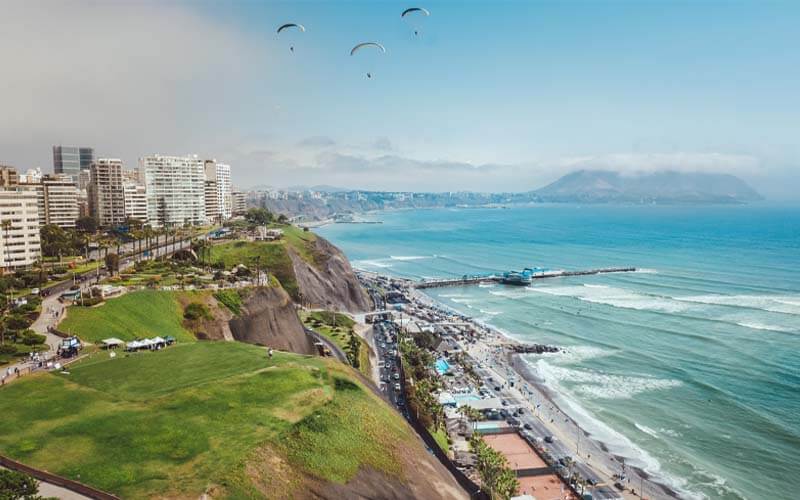
Cliffs & beach in Lima
LIMA
Lima is Peru’s capital city and has many pleasant areas to visit such as; Plaza de Armas (the main square) in the heart of the city’s historic district. The highlights around the Plaza de Armas are the cathedral on the east side and Government Palace (Palacio del Gobierno) on the north side. Also of interest are the Archbishop’s Palace and the Casa del Oidor (considered to be the oldest house in Lima). Leading off the square is the pedestrian street ‘Jiron de la Union’ with shops, restaurants and the historic ‘Iglesia de La Merced’ church.
The quaint hillside district of Barranco (just south of Central Lima and Miraflores) is a charming area within easy commuting distance of downtown Lima. With colorful colonial architecture lining the narrow streets and hillside ocean views, it offers a much more relaxed pace than the city. The area has long been popular with artists and poets, giving it a Bohemian feel. This is a great place to wander in the afternoon or enjoy a meal, particularly at sunset, at one of the restaurants overlooking the ocean. Besides the atmosphere, a must visit attraction in Barranco is the romantic Bridge of Sighs.
Here’s a few things you can do in Lima:
CUSCO
Cusco is a beautiful colonial town that is also the jumping-off point for visiting Machu Picchu. Located at a high altitude of 11,000 ft above sea level it takes some getting used to, once your flight lands. Take it easy upon arrival and sip on plenty of coca tea (it helps with altitude sickness!).
Don’t miss seeing the Plaza de Armas (main square) where you can explore the cathedral of Santo Domingo and the Iglesia de la Compañía de Jesus (church). Cusco even has its own Christ the Redeemer and you must also check out the Twelve Angled Stone.
Hike Rainbow Mountain: The hike to and from Rainbow Mountain is one of the top attractions in Peru, and Cusco is the area you want to be in to experience it. It is a day-long trek at over 14,000 feet, tracing a dirt path between enormous peaks of green and spectacular red rock. It’s a beautiful route, passing local villages and mountain streams to a rainbow colored mountain scene that you will never forget.
Here are a few suggestions and helpful links, on the thing you can do while in Cusco:
AREQUIPA
Arequipa, at more than 7,500 ft, is often regarded as Peru’s most beautiful city. Set against a backdrop of snow-capped mountains, the city center is a designated UNESCO World Heritage Site. Arequipa’s main claim to fame is the old architecture constructed of sillar stone, a volcanic rock that radiates a bright color in the sunlight. Most of the colonial buildings in the historic city center are made from this stone, giving rise to its nickname of the “white city.”
Arequipa is also often a stopping off point for those looking to visit the Colca Canyon, which is actually twice as deep as the grand canyon. The Colca Canyon is also famed for the condors that soar through the air, as well as its world class river rafting.
Here are some activities you might want to do in Arequipa:
THE AMAZON
The Peruvian part of the Amazon jungle is one of the most bio-diverse areas in the whole world, boasting at least 1,000 birds and over 200 mammal species. Here you can explore the river by boat or get a deeper understanding of the jungle and its people by staying it one of the many jungle lodges. Tours typically range from a couple of days to week-long adventures.
This is a completely different experience than what you will find in other parts of Peru, with hot humid jungle and a chance to see all kinds of unique wildlife. Caimans, capybara, monkeys, parrots, turtles, and piranhas are just some of the animals you can expect to find in this part of the country.
Here are some activities you might want to experience in the Amazon:
PUNO (LAKE TITICACA)
Located between Bolivia and Peru, Lake Titicaca has an elevation of 12,500 ft above sea level, but that’s not the only thing that makes this natural wonder stand out. In the 1970s Jacques Cousteau, a French conservationist, found ruins of a city beneath the surface of Lake Titicaca. Today, the descendants of the Quechua people who called this lost city home, live on 120 self-made floating islands. Lake Titicaca is the largest lake in South America and the Inca people believed it was the birthplace of the sun.
Puno makes the best base to explore the islands, where you can walk on the spongy reed surfaces and witness the age old traditions of the people here first hand. For a real treat consider catching the Titicaca tourist train, between Cusco and Lake Titicaca. Expect wide-screen landscapes, llama-dotted plains and valleys filled with Adobe villages.
Here are some activities you might want to do, while in Puno:

HEALTH CARE IN PERU
Medical care is generally good in Lima and usually adequate in other major cities, but it is less so elsewhere in Peru. Visitors to high altitude Andean destinations such as Cusco (11,000 ft), Machu Picchu (8,000 ft) or Lake Titicaca (12,500 ft) might want to discuss the trip with their personal physician prior to departing – particularly those who suffer from cardiac-related problems or high blood pressure.
Even healthy and fit travelers will most often feel symptoms of altitude sickness and need time to adjust. To help prevent these symptoms, I suggest taking the long bus ride from Lima (and then take a return flight) in order to adjust gradually. Also limit physical activity for the first 24-48 hours – this is exactly what I did and I felt no effects.
In the jungles of The Amazon; cholera, yellow fever, hepatitis, dengue fever and other exotic and contagious diseases are present. The U.S Centers for Disease Control and Prevention (CDC) and the Peruvian government recommend that travelers to Peru receive a yellow fever vaccination.
Diarrhea caused by contaminated food or water is also very common in Peru. To avoid this do NOT drink the tap water, get yourself a filtered water bottle, wash fruits and vegetables, and be sure to cook meats thoroughly.
Travel Insurance
With the risk of trying not to sound like your mother, travel insurance is one of the most important investments that a traveler can make. Travel insurance assumes particular importance while traveling abroad simply because of the number of risks associated with it.
Life happens and horrible things can occur that are out of our hands. Bad things can happen everywhere, even in the safest of places. You could get hit by a car, fall down a flight of stairs or have your bag snatched from you!
These are the best companies that I have thoroughly researched, used myself and highly recommend:
Safety Wing – it’s the cheapest, they cover all types and durations of travel – perfect for digital nomads, they have covid-19 in it’s policy, you can purchase or extend even if you’re already on the road and they cover up to age 69.
World Nomads – they cover everything previously mentioned by Safety Wing however become the cheaper option between age 39-69, cover the more adventurous and dangerous activities (such as scuba and sky diving) and they also cover loss of electronics.
Insure My Trip – After age 70 (not that I have obviously used them myself) my research has shown that is most likely is your best option, in both excellent coverage and price.

LAWS IN PERU
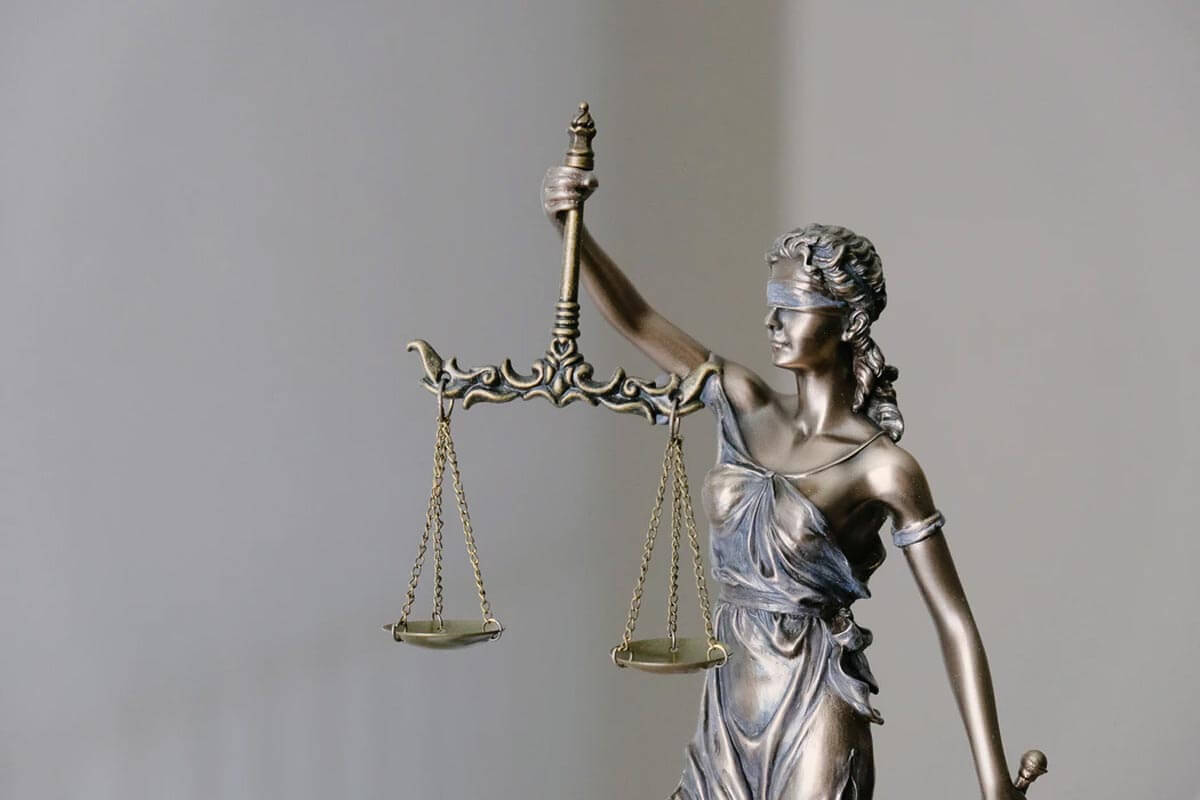
The legal drinking age in Peru is 18 and many establishments (outside of Lima) do not typically ask for ID. It is not unusual to see underage individuals purchase beer from a convenience store. In fact, do not even be surprised if you see children drinking ‘chicha’ (an inexpensive fermented corn beer) at parties or in the streets throughout the country.
Coca leaves outside of (some) South American countries is strictly prohibited, but totally legal to buy and consume in Peru. It will not get you high but can help with altitude sickness, so feel free to give it a try if you like. Just remember not to take any out of the country!
Many Peruvian police officials are poorly paid and poorly trained. Whenever you are interacting with government officials or local authorities, always try to remain polite and calm (no matter how frustrating the situation may become). Police corruption, particularly in the acceptance of bribes, is common. In some cases, a police official may even expect a bribe (especially for traffic violations – real or otherwise).
In addition, there have been reports of ‘fake’ police who demand to search you and then find some reason to ask you to pay a fine. If you suspect this is the case (especially if you have done nothing wrong) be skeptical, threaten to call the police and do not go with them to a private area (where you may be robbed).
Here are some other interesting (albeit strange) things to note that are also illegal in Peru:
- Sexual relations with a llama is illegal – I should bloody well hope so!
- Sodomy is punishable by death – bit harsh?
- All hot spices are banned from being used in prisons. This was enacted due to the belief that serving spicy foods to prison inmates would their ‘arouse their sexual desires’ – I mean who knew that eliminating sex crimes would be as easy as banning sriracha, huh?

SCAMS IN PERU
Peru is considered a pretty safe country, but it does require you to be a little more vigilant. The vast majority of visits are trouble free and there is certainly no need to be paranoid, however visitors do need to exercise caution, in regards to petty crime and tourist targeted scams.
The Machu Picchu Ticket Scam;
To ensure that you are not sold a fake entry ticket, which is quite common, you can purchase your ticket online through the official government website. If you find the official site hard to navigate, you can also buy your tickets through ‘Get Your Guide’ with ease. You may also hear that you cannot visit the Machu Picchu site without a guide, this is not true. However, if you would like a guide to enhance your visit, I suggest booking again through ‘Get Your Guide’ (which have several tour options available).
The Bird Poo Scam;
Someone squirts something on you (usually a white substance resembling bird poop) on your shirt. They then promptly point it out and try to help you clean it up. In the process, they will attempt to steal any valuables they can find from your pockets, or distract you so their accomplice can run off with your unattended belongings. If this happens to you, immediately decline any assistance and keep moving to a safe spot before cleaning up the mess yourself (keeping a tight grip and a watchful eye on your valuables). You can help to protect yourself by keeping your wallet in your front pocket, cards and cash in a hidden spot on your body and any larger valuables in an anti-theft bag.
The Ayathuasca Scam;
Ayahuasca is a psychedelic drug. It is not illegal but can be a cause of scams, let alone dangerous. I suggest if you are considering partaking in this activity to do a lot of research first, as it has resulted in more than a few tourist deaths – even then there is no way to know how your body will react. If you do decide you want to risk it, then make sure you again do your research, and select only an accredited retreat. The scam to be aware of is that Shamans offering spiritual cleansing will perform these rituals in remote jungle areas, then once you start hallucinating rob or assault you.

SAFETY IN PERU
Police ⇒ 105 Ambulance ⇒ 117 Fire ⇒ 116
Peru is one of the safest countries for travelers in South America, however as mentioned before, theft is a fairly common occurrence. I have only had one thing stolen during all of my travels and sadly it was in Peru. I mistakenly left my phone on my bus seat, after getting off from a long trip from Lima to Cusco. After realizing only moments later and upon my speedy return, alas it was already gone. I am almost positive it was the suspicious looking cleaner, but the police at the bus station could not have cared less – sadly for me though it meant no photos of Machu Picchu!!!
Be sure not flaunt your valuables and make sure to watch your belongings at all times. Make copies of your personal documents, including your passport. Forward your itinerary along to loved ones so they know where you are. For that extra bit of security, especially for solo female travelers, you may want to also consider a portable door lock or a personal alarm.

ACCOMMODATION IN PERU
The accommodations in Peru vary greatly and there are certainly no shortage in choices. You can even rock climb up to and zip line down from the World’s First Hanging Lodge sleeping in a pod suspended on a rock face above the Sacred Valley, near Cusco! Here are some of my other favorite places to stay, broken down by area and budget:
*Note: Click on image to enlarge. Use the X on top right corner to exit.
LIMA
HOSTEL: Selina Miraflores Lima
ECONOMY: Casa Suyay
MID RANGE: AC Hotel by Marriott Lima Miraflores
LUXURY: JW Marriott Hotel Lima
CUSCO
HOSTEL: Super Tramp Hostel
ECONOMY: Casa Real
MID RANGE: Novotel Cusco
AREQUIPA
HOSTEL: Way Kap Hostel
ECONOMY: Le Foyer Arequipa
MID RANGE: Katari Hotel at Plaza de Armas
LUXURY: CIRQA – Relais & Chateaux
IQUITOS (AMAZON)
HOSTEL: Moicca Hostel
ECONOMY: Iguana Haus
MID RANGE: El Dorado Classic Hotel
LUXURY: DoubleTree by Hilton Iquitos
PUNO
HOSTEL: Kantaya Hostel
ECONOMY: Habitacion flotante Vista al lago
MID RANGE: Casa Andina Premium Puno
LUXURY: Titicaca Lodge Peru
AIR BNB
If living like a local in your own space is more your thing, then AirBNB can be an excellent choice in Peru. Of course though, with all of the popularity the platform has gained, prices and fees have certainly increased.
HOWEVER there is absolutely no need to pay full price for an Airbnb! Click here to find out one of my ‘TOP TRAVEL HACKS’ and how you too, never have to pay full price again!

TRANSPORTATION IN PERU
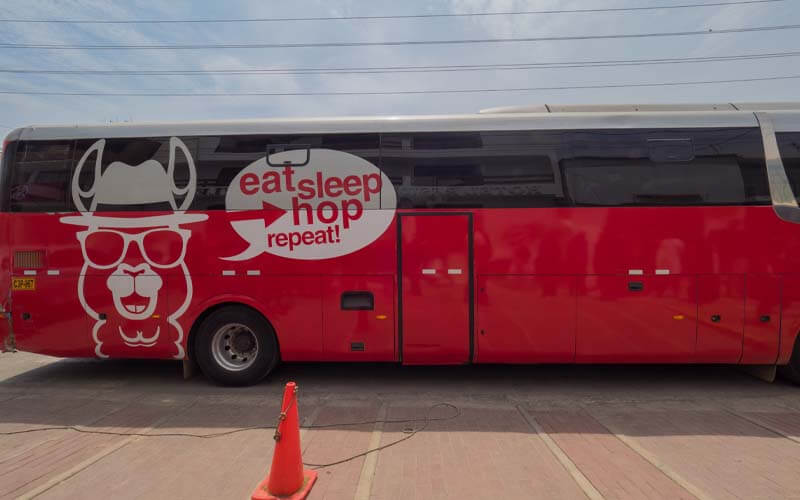
Peru Hop
There are several transportation options in Peru, so pick the transport that’s the right combination of comfort, speed and affordability for your needs. Peru is a very big country, so you may need to arrange for a longer visit if you want to fit in all of the top destinations. But whether you take the slow scenic route and stop in multiple destinations or linger in one location, don’t worry, there are several options for you to chose from.
Transportation from the Airport
I highly recommend using the new Airport Express Lima Bus to get to your hotel and back to the airport. It is safer and cheaper than a taxi, with no baggage limit, has free WIFI, USB chargers and air conditioning onboard.
Best ways to get around Peru:
-Bus;
Traveling by bus is one of the most common and an affordable way to get around in Peru and will take you all over, if you have the time and don’t want to fly. Just be wary of possible luggage theft (keeping an eye on your baggage or by using a case or bag that you can lock) if storing down below. Just keep in mind though that any journey through the mountains will be a long one (Lima to Cisco, takes approximately 21 hours) but they are surprisingly comfortable – kinda like flying first class. In Lima there are the intra-city buses, that are safe (taking into account that theft is common). There are also urban busses called ‘colectivos’ located throughout the country that are even cheaper, but they are a bit hectic and definitely take a little getting used to. Bring change though, as these busses do not have automated ticketing.
-Taxi;
Look for newer cars that are in good shape, have a taxi sign on the roof and a professionally dressed driver, because some taxi drivers in Peru do not have a taxi license and registration. Unlike in some other countries, taxis don’t have meters and don’t have set prices. The fare of your ride depends on the length of the journey, traffic conditions and your negotiation skills. Always clarify the price of your fare before you get into a taxi, talk direct and question the first price that they give you. This will give them the impression that you know what you are doing and they will be less likely to over charge you. There is also Uber, which is always the better option due to the upfront set fare, but it only currently operates in Lima and Arequipa.
-Peru Hop;
My absolute TOP choice for travel, if you want to see the top tourist destinations in Peru, is the buss service called ‘Peru Hop’. Your ticket is valid for 1 year – meaning you can stay on the bus and travel direct or stay for a while in each location as you wish. Peru Hop is the first hop-on, hop-off bus service that covers all the major destinations – oh and also you can add on Bolivia if you like too? I recommend starting in Lima and ending in Cusco (to help acclimatize to the altitude gradually and then fly out). Peru Hop is for everyone, regardless of your age – you are guaranteed to make new friendships, not to mention all the extra stops and freebies you get along the way!
-Train;
The rail system in Peru is basically non-existent, except for a couple amazing tourist options. PeruRail operates luxury sleeper trains to Puno and Arequipa (from Cusco) AND both PeruRail and Inca Rail both run trains between Cusco and Aguas Calientes (the gateway to Machu Picchu). The train ride runs along the banks of the Urubamba River, through the Sacred Valley of the Incas and is considered one of the most beautiful short routes that exists in the world. Do not forget to charge your camera!
-Air;
Peru has several international and domestic airports but flying between destinations is not usually the cheapest option. Depending on how much time you have, flying will certainly get you around a whole lot quicker. The airfare prices will be priced accordingly, depending on the season.
To view schedules, prices and to purchase your bus and flight tickets, I use and recommend the 12Go website.
Traffic rules in Peru
In Peru, they drive on the right side of the road (same as in the US). Speed limits and distances are posted in kilometers and an international drivers’ license is not required.
Traffic in Peru can be well,… crazy! While there are ‘designated’ lanes for driving, practically no one adheres to them. Instead, you will find four cars driving side by side on a two lane highway. You will also notice very soon that the Peruvians love to use their horns – for absolutely everything!!!
Rent a vehicle
The minimum age set by car rental companies is 21. You will require a passport plus a valid drivers license, which you will need to have with you at all times when driving. If you get pulled over you won’t want to be missing those, especially when dealing with Peruvian police, who have been known to be corrupt and like take money from travelers.
Peruvian drivers are also aggressive and if you don’t also drive at times aggressively you’ll never get to where you want to go, especially in cities. Personally, I would not suggest renting a car in Peru, unless maybe as a cost saving alternative for long distance travel with families and larger groups – just bear in mind this is not a country for inexperienced drivers.
Rentalcars.com is one of the most comprehensive comparison websites that offers deals and discounts on rental cars, in Peru and across the world.

WHAT TO PACK FOR PERU
This will totally be dependent on WHEN, WHERE and WHAT you plan on doing while you are in Peru?, keeping in mind its many climates.
Most people will travel during a summer climate, but I would always suggest taking a light rain jacket with you.
I visited Lima during the summer but took a trip to Machu Picchu and surprisingly had to purchase a rain jacket. Yes, there are always cheap ponchos available to purchase, but having a proper rain jacket when needed will definitely enhance your experience.
It's always good to bring some wool
No matter the season or activity though, it’s always a good idea to bring some wool – merino wool that is. Merino wool travel clothes are all the rage now and for good reason. They are simply an awesome travel fabric, durable, water resistant, wrinkle resistant, quick drying, sweat wicking and odor resistant (particularly useful during travel, so that your dirty laundry doesn’t stink up your luggage).
Also, merino wool adapts to the climate you are in. It is thin (so perfect as an underlayer in colder temperatures), lightweight, super comfortable and unlike other natural wools – not itchy!
There are several Merino brands out there but my favorite is definitely ‘Ice Breaker’ as their range of clothing is extensive, from socks and underwear to shirts and pants, plus many more items.
Bring your own water bottle
Tap water in Peru is NOT SAFE to drink. Do yourself and environment a favor by using reusable bottles. No matter where I go I always bring my LifeStraw water bottle with purifying filter. This way I’m not aiding to the pollution of the planet simply by re-using the same bottle many times over as well as avoiding to pay for expensive, wasteful bottled water – especially at the airports where the amount they charge after clearing customs is outrageous!
Don't forget to pack sunblock
Bring your own sunblock with you, as it’s more expensive in Peru than at home, and the sun effects can be stronger at higher elevations. There are many alternative to liquid products nowadays and I personally use a Neutrogena Sunscreen Stick.
In addition, in case you were wondering if there are mosquitoes in Peru? The answer is YES! Along with heaps of other bugs (especially in the Amazon). Rather than using sprays, I prefer to carry a solid repellent balm. It’s super convenient, it works and it smells good too.
What not to bring to Peru?
When traveling to a foreign country, it’s always a good idea to know which items you should leave at home. The official list of restricted and prohibited items for Peru is long, but most items on it are surely nothing a normal traveler would carry around. So here are just a few items that you don’t want to pack;
- Fireworks
- Used clothes and shoes due to amount and value not considered for personal use
- Any beverage named “Pisco” not produced in Peru
- Used car spare parts
Packing hacks
One of my favorite ways to squeeze in more for my travels, is to roll up my clothes. To be even more organized I love to use packing cubes – that way I can take out the relevant cube rather than rummaging around at the bottom of my baggage.
Another way to further up your packing game is to use a Portable USB Vacuum Pump. This is a highly efficient and inexpensive way to reduce the volume of your clothes to only a fraction of their original size, simply by just removing the air.
Have you ever had to dump some of your luggage at the airport or shuffle items, from one bag to another, just before boarding your flight? Well, carrying a luggage scale with you will protect you against the excess baggage charges and ensure that you’re never again faced with any nasty surprises at check-in ever again!
Another smart thing to have is a tracker to put inside your luggage or attach to your valuables. There are few different options on the market, but I’m now using the new Apple AirTag.

GROUP TOURS AROUND PERU
Peru is great for solo travelers but if traveling by yourself isn’t your jam, I highly recommend G Adventures. They are a super reputable travel company, who have been around for a long time. The reason why I love G Adventures is because they have loads of different tours that cater to different age groups. They have tours for the young (18-30), wellness tours and even combo tours that take you to a few South American countries, allowing you to explore even further.

WHAT TO EAT IN PERU

Ceviche
World wonders and hiking aside, one thing Peru is known for is its food – it’s widely considered one of the top foodie destinations in the world. The main reason for this is simply because of the sheer diversity of micro-climates and ecosystems allowing for a multitude of products to be grown, making Peruvian cuisine very diverse. And although a conversation involving Peruvian food usually starts with the country’s mind-boggling variety of potatoes (yep, over 3000!!!) there is so much more to discover.
Peruvian cuisine is a perfect reflection of the country’s history. You will find that most recipes are a fusion of native foods and immigrant cuisine – influenced from Asia, West Africa, and Europe. So, make sure you’ve had something to eat before you read this, because you will be hungry after being introduced to these culinary delights;
TIPPING – Peruvians are not big tippers, however tipping is a great way to show your appreciation and have it go straight into the pockets of the people that need it. A 10% tip will be warmly accepted at any restaurant and will certainly put a smile on your servers face.
Here are some of the most popular (must try) dishes that I recommend you taste in Peru;
CEVICHE
The national dish and one of the most popular foods in Peru, ceviche can cause instant obsession. This zesty treat is a fresh fish dish that is super healthy and made from raw fish, that’s marinated in lime juice, onion, salt, and hot chilies. Depending on the chef and location, there are different varieties of fish used in the recipe, but the best places to eat Ceviche in Peru will always be near the coastline. You can find it in street food variations or delicious fine dining options, it would be a crime to leave Peru and not taste this delicacy.
LOMO SALTADO
Coming in second only to ceviche in popularity, lomo saltado is a Peruvian-Asian fusion dish. Tender strips of beef (occasionally alpaca meat) are marinated in soy sauce and added to onions, tomatoes, aji chillies and other spices. Served with a mound of fluffy white rice and fried yucca (the Peruvian answer to French fries) you won’t have any trouble finding it on most restaurant menus.
CUY
There is no simple way to sugar coat this, just like eating chicken feet in China or frogs legs in France, Cuy is Peru’s bizarre delicacy (a traditional dish that’s made from roasted guinea pig). It is the second most popular source of meat in the Andes (alpaca being the first). Although some people might not like the idea of eating a guinea pig or even alpaca meat, it’s commonplace in Peru and is becoming more popuar in North America for its taste and ecological benefits. It is served crispy and whole – head and feet intact! I must admit that I personally could not wrap my mind around eating one myself, apparently though it’s a melt-in-your-mouth tender dark meat and is generally eaten with the hands.
POLLO A LA BRASA
If roast Guinea pigs don’t get your tastebuds tingling, maybe a roasted Peruvian rotisserie chicken will instead! Roasted chicken might seem out of place in amongst some of other the weird and wonderful authentic Peruvian food options, but it’s in fact another of the most popular foods in Peru. Marinated in cumin, garlic, red peppers and roasted to achieve a perfectly crispy skin. It’s served with french fries, salad and a few dipping sauces, and while you can find it in most restaurants, to make sure you get the best of the best you need to head to a polleria. Add an Inca Kola to your Peruvian chicken dish and you’re practically ready to apply for citizenship.
ANTICUCHOS
Antichuchos is similar to a late night kebab on a night out and traditionally the recipe includes beef heart, marinated in vinegar and hot spices, cooked medium-rare in a charcoal oven. Like kebabs, the cubes are often skewered along with slices of onion and potato and drizzled with lime. This dates back to Spanish colonial times when the Spanish would take the best portions of the cow and leave the organs for the locals. Don’t be deterred by the thought of eating hearts. Heart is leaner than filet mignon and is absolutely delicious. It’s in fact an ‘offal’ and considered a super food, which is incredibly nutritious. This is one dish that you do not need to feel guilty about trying!
BUTIFARRA
These pork sandwiches are by far my favorite street food snack, with all the perfect ingredients. From somebody that doesn’t particularly like pork, that says a lot! Marinated, roasted, sliced thinly and then cooked with a special spicy sauce on a hot grill – all paired with spicy peppers and onions and slid onto a soft crusty roll. They are cheap, delicious and probably will become your favorite too.
PICARONES
This is another of my street food favorites and whenever I walk by a food stall that serves this sweet dessert, there is always a long line. Imagine a soft fried donut drenched in a rich fig syrup (called chancaca). Picarones are a local and tourist favorite alike. Not only are they delicious, but the talented picaroneras, who make them, are fun to watch. Most Peruvian enjoy them as a dessert or a snack. But you can eat them anytime of day, including breakfast. If you have a sweet tooth, you’ll definitely want to give these sweet treats a try.
PERU'S NATIONAL DRINK:
Pisco is made from Peruvian colorless grape brandy and is mixed with lemons, sugar water, egg whites, ice and finished with bitters to make a Pisco Sour (Peru’s National Cocktail). This potent cocktail is said to have been invented by the American bartender, Victor Vaughn Morris in the early 1920s at Bar Maury in Lima, and it pairs well with any of the above food! You can also try a version of the drink, made without egg whites, called Chilcano. This cocktail has become so popular that it even has its own National Pisco Sour Day – celebrated annually on the first Saturday of February.

Pisco Sour
FOOD TOURS IN PERU:
If you are a foodie fanatic like me and like to eat your way through a country, I recommend you go on a food tour. The local insight of guides are amazing and give you a better understanding of the local cuisine (plus they know all the best spots!). Listed below are my top recommended food tours in Peru:

SUGGESTED READING FOR PERU
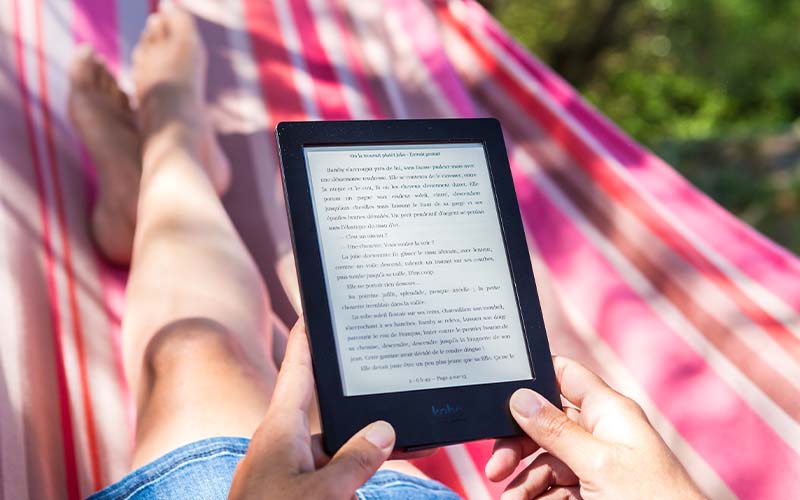
Books about travel inspire us to go visit far off lands and imagine ourselves doing incredible things. Eat, Pray, Love is the book that actually inspired me to give up everything and start traveling the world!
Long bus, train or plane rides can get pretty boring and can give you a lot of ‘dead’ time. Whether that’s on a plane ride flying into the Amazon or on a bus traveling to Machu Picchu – sometimes you need to find ways to keep yourself entertained. Personally, I have found that reading a good book is one of the easiest ways to pass the time and there’s nothing better than reading about the country you are in. In fact, sometimes reading a travel book can be as transformative as the journey itself.
This is my personal list of travel books that I recommend checking out before or during your trip to Peru. They are sure to inspire wanderlust in everyone who reads them. Trust me, these books will motivate you to get off the couch, pack your bags and set out on your own fun-filled Peruvian adventure – enjoy!
I love Lonely Planet for so many reasons. It’s perfect for getting initially orientated with a country and then goes on to provide fun and useful tips, interesting side stories, historical info, trip suggestions, route planning sections and contains plenty of must-see’s and hidden gems. Yes, Lonely Planet is the gospel of all travel guide books and if you’re really stuck LP can be a lifesaver, sometimes literally.
(also available on Kindle)
Discover a plethora of topics such as; The Origin of the Incas, The Kingdom of Cusco, The Rise of the Empire, Life in the Inca Empire, The Spanish Conquest, The Fall of the Inca Empire and much more!
(also available on kindle)
Carlos Bluhm leads the good life in upper-class Lima: He attends social functions with his elegant wife, goes out drinking with his three best friends, and has the occasional, fleeting assignation. Then he meets Maria Fernandez, a dancer at a tango bar in a rough part of town. They begin a passionate affair, one that will destroy his marriage and shatter the only reality he’s ever known.
(also available on kindle)
Have you ever fancied cooking some dishes that are completely different to the regular fair? Well, now you can, and all it takes are a few Peruvian ingredients to make dishes that are healthy, tasty, and will become a family favorite, or something you can win over your friends with.
(also available on kindle)
Not a reading book, rather a fun adult coloring book which is perfect for those long busses and trains around Peru.
(not available on kindle for obvious reason, haha)
I travel light, so bringing books with me is not my preferred choice. That’s where the Kindle Paperwhite comes in incredibly handy. It is light-weight and waterproof – which means I’m free to read and relax at the beach or by the pool, without any worries.
There are FREE books you can get on Amazon for your kindle, such as my personal favorite; ‘Kicking Ass on the Road‘ The Ultimate Guide for the Solo Female Traveler.

MONEY SAVING TIPS
As I’m sure you do, I always like to save money wherever I can, on my travels. Here are some of my best money saving tips for Peru;
couch surf
Accommodation is pretty cheap in Peru but nothing is cheaper that free! Use Couchsurfing to stay with locals who have an extra couch (or if you are lucky, a bed). You will meet great people that will also be happy to show you around too. It is one of my favorite travel services out there and I always walk away with new friends.
House & pet sit
Again, another great tip for getting free accommodation; Trusted Housesitters is a membership program that matches home & pet owners with travelers in trade for accommodation. The home is not left empty, the pets get to stay in the comfort of their own homes and the traveler gets to stay for free (a total win/win situation!).
DON'T OVER PAY FOR SOUVENIERS
If you want to buy souvenirs, buy in local markets, rather than in touristy shops or airports. The center of Cusco and the Miraflores district of Lima are good examples, with fancy stores selling overpriced items to tourists. Visit a nearby traditional market and you’ll probably find the same items for almost half the price.
Bargain hard
If you like to shop, then don’t be afraid to haggle. Peru is a haggling nation, so don’t always accept the first price given. This is especially true in touristy markets and souvenir stands. The same applies for taxis (not buses), with most drivers giving you an inflated price when first asked. Foreign tourists are prime targets for inflated prices, so always ask first and be prepared to haggle to a certain extent.
EAT THE MEAL OF THE DAY
These are set meals in local restaurants and are a bit like the ‘the daily special’, which you can usually get for around $3 USD. In addition, most cities have markets where most of the locals get cheap eats from as little as $1 USD.
GO ON A FREE WALKING TOUR
This is a great way to learn the history behind the places you are seeing and to avoid missing any must-see stops. Free Walking Tours Peru have tours that can guide you around both Lima, Cusco and Arequipa.

FUN FACTS ABOUT PERU

Condor, Colca Canyon
I love learning about the countries I travel to and I especially love learning fun and unusual facts, here are a few fun facts I’d like to share with you about Peru:
The Largest Flying Bird on Earth can be found in Peru:
The Giant Andean Condor, standing up to 4 feet high with a wingspan of up to 14 feet!
The Incan Empire was larger than imperial Rome:
At its peak, it included 24,855 miles of roads and relied on a network of chasquis (runners) to keep the kingdom connected.
There are 10 million alpacas in the world:
Three-quarters of them live in Peru.
The national animal is the vicuña:
A small camelid similar to the alpaca. It comes in 22 natural colors and its wool is considered the world’s most luxurious fabric.
The potato originated in Peru:
Today, there are over 3,000 varieties grown in the country.
Peru grows more than 55 varieties of corn:
When you go to a market in Peru, you can just about find corn in any color; including yellow, purple, white and black.
Peruvians celebrate New Year’s by gifting one another yellow underpants:
On New Year’s Eve, to bring good luck in the coming year, it is tradition to wear them inside out (underneath clothing) until midnight, then flip them around at the stroke of midnight.

FINAL THOUGHTS
Explore the jungles of The Amazon, Inca Ruins, sail on the highest lake in the world and enjoy the beaches – these are just a few things you can experience when you travel to Peru. All while learning about local indigenous culture, practicing your Spanish and eating your way through the country! Yes, there is a lot to do when you travel around Peru and you could easily spend a month or more here!
Thankfully traveling around Peru is also very inexpensive. You don’t need a lot of money to visit here (even if you do the Inca trail). You get a lot of bang for your buck whether you backpack across the country or just come for a short trip!
Bookmark this page if you plan on adding to Peru to your bucket list and stay tuned for my upcoming ‘PERU – ITINERARY’.
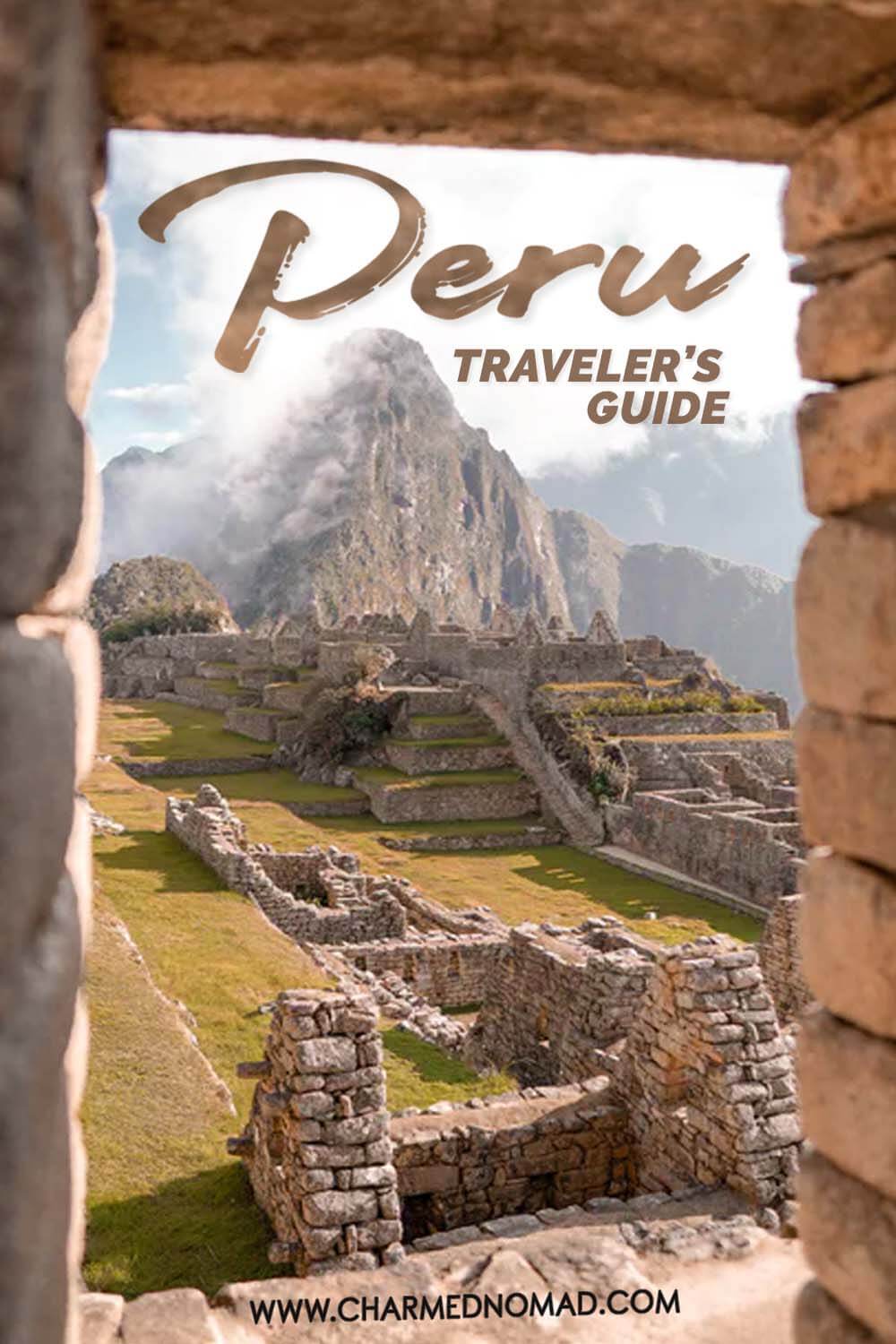
To see where I am in the world today and for more travel inspiration and tips; FOLLOW ME on Instagram, Facebook, Pinterest or join The Charmed Nomads private community Facebook Group.
Share it if you like it 😉


Hi, my name is Emma and I’m so happy to see you here. I hope to provide you with valuable information, travel ideas and inspiration. It’s an amazing world out there and I want to help you discover the very best of it!

If you would like to keep up with my latest blogs, exclusive tips, discounts, giveaways and more.




